|
“Westward ho—Today at 11 o’clock AM Messrs William Dean & family, Lewis Stein wife & 3 children, & also Mrs. Henry Sinn (going as far as Vincennes Indiana) left in the cars for Saint Joseph Missouri. Mr. Dean has a son there (W. H. Houston Dean) & Mr. Stein has two brothers-in-law (J. H. Dean & Philip Buddy) there already. May success attend them.” Jacob Engelbrecht Tuesday, April 5, 1870 111/4 o’clock AM This colorful passage was taken from the diary of Frederick tailor Jacob Engelbrecht (1797-1878). The mention of the Dean family’s move to Missouri in 1870 is an interesting one as it would have a direct effect on Mount Olivet. Although we lost a few future inhabitants to Missouri, we gained an impressive grave monument adorned with an anchor—but not the first in this part of the cemetery. (See our earlier story on Captain Herman Ordeman from August, 2018). I'd like to begin by sharing some backstory on the Dean family. The Deans hailed from the New Market area, and brothers William and John can be found living next to each other on neighboring farms. This is reflected in the 1850 census as they are enumerated in descending order. The son of the above-mentioned 1870 traveling patriarch (William Dean aka William Dean 2nd) of the Dean family mentioned above was a gentleman by the name of William H. R. Dean (b. August 28th, 1838). The younger William had bought lot #74 in Area A in 1862 upon the occasion of the death of his wife, Ann Louisa (Gallion) Dean. Sadly, the newlywed Mrs. Dean was only 24 at the time of her passing. I found Ann Louisa’s parents (John Presbury Gallion and wife Mary Elizabeth Brown Gallion) in another part of the cemetery, Area P (Lot 29) only yards from William H. R.'s uncle (John Dean Jr.) and family in Area P/Lot 74. I was curious why she was not buried in a family lot with them as usually happened in situations like this. The 1850 census shown earlier shows William Dean’s wife, Catharine Barrick (b. 1814), and three sons on the family farm in New Market. They would relocate to Frederick by 1860 and took up residence on East Third Street near the location of Chapel Alley. I soon became enthralled with the professional careers and achievements of all three of these Dean children. By 1860, oldest son William H. R. and his father were running a dry goods store in Frederick. Their quirky advertisements filled the local newspapers of the decade as their business had an original location at North Market and Third streets. By 1866, it had moved to the corner of East Patrick and Carroll streets. 1862 was a bittersweet year for William H. R. Dean. This is when the young man would marry Miss Gallion. Unfortunately, the couple would only have nine months of wedded bliss together. 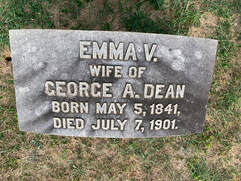 As mentioned earlier, Ann Louisa’s body was laid to rest in the William H. R. Dean lot on the day after Christmas, 1862. It would be quite a while before another family member would join her in this once shaded parcel near the front of the cemetery. I stumbled upon another interesting burial tidbit from our friend Jacob Engelbrecht around this same period, just a few months after the Confederate Army under Gen. Lee visited Frederick in September, 1862, followed by the nearby battles of South Mountain and Antietam that same month. Engelbrecht stated in early January, 1862 that the whole number of Civil War soldiers that had been interred since the previous August was 767, of whom 579 were Union and 188 were “captured Rebel prisoners,” his words, not mine. Interestingly, many of those Union soldiers counted by Engelbrecht in this inventory would be re-interred and buried elsewhere back in soldiers' hometowns and in Antietam National Cemetery in Sharpsburg. Ironically, the lot holder’s brother, George, narrowly escaped death during military service in the Great Rebellion, as he could have added to the tally and joined Ann Louisa Dean during those war years. It would be this gentleman George A. Dean) who would assume this burial plot after the rest of his Dean family moved west. Thirty-nine years later, in 1901, Emma V. (Gorton) Dean would be buried in the Dean lot on Area A with Ann Louisa. These two women were sisters-in-law, albeit brief if at all. That calls for some family identification of the William Dean family. I will tell you that not all the Deans went west. The whole move was precipitated in theory by Ann Louisa’s death you could say. Her widowed husband, William H. R. Dean would move to Missouri in 1869. Of course this is who Engelbrecht referred to in his diary entry to kickoff this story. William H. R. had married again, Miss Elizabeth C. Stein (b. November 30th, 1841) in 1864, which eventually influenced her brother (Lewis Stein) to make the trip to Missouri with his brother-in-law’s family in 1870. Emma V. Gorton was the wife of George Albert Dean (b. January 27th, 1841). William Dean Sr.'s second son. Emma's obituary says little of her life deeds, but paints quite a picture of her husband’s life’s work. As you can see, George A. Dean stayed here in Maryland instead of moving to Missouri. Actually, truth be told, he headed east to Baltimore, but came back to live his final years here in Frederick on Rockwell Terrace. His life story is brilliantly told in TJC Williams and Folger McKinsey’s History of Frederick County, published in 1910: "George A. Dean, a well-known resident of Frederick City, Frederick County, Md., was born on a farm in New Market District, Frederick County, January 27, 1841. He is the son of William and Catherine (Barrick) Dean. The Dean family is of English lineage, and emigrated to the colonies prior to the American revolution. Robert Dean, the great-grandfather of George A. Dean, was married to Elizabeth Reynolds, a sister of Hugh Reynolds. They were the parents of William Dean 1st. William Dean 1st, son of Robert and Elizabeth (Reynolds) Dean, was married to Alice Reynolds, daughter of Hugh and Alice (Flemming) Reynolds. They were the parents of William Dean 2nd. Mrs. William Dean’s father, Hugh Reynold’s, was a native of County Tyrone, Ireland. In company with his three brothers, William, James and John, he came to America about 1769. He had also two sisters one of whom, Elizabeth, married the Robert Dean mentioned above. Hugh Reynolds was married in 1780, to Alice Flemming, who was born in 1761, being seven years younger than Mr. Reynolds. They were the parents of the following children: 1. William, born in 1781; 2. Eleanor, born in 1782; 3. Margaret, born in 1784; 4. John, born in 1786; 5. Samuel, born in 1788; 6. Alice, born in 1790, married William Dean 1st; 7. Elizabeth, born in 1791; 8. Ann, born in 1792; 9. Lillie, born in 1794; 10. Jane, born in 1796; 11. Malinda, born in 1798; 12. Maria, born in 1800; 13. Sarah, born in 1802. William Dean 2nd, son of William and Alice (Reynolds) Dean, was born near Frederick City, in 1810, and died in 1886. He was a tanner by trade, but in later life, followed agricultural pursuits. In his political views, he was, in early life, an Old-Line Whig but he afterwards adhered to the Republican party. He was a member of the Presbyterian Church, and filled the offices of elder and of deacon. William Dean 2nd was married to Catharine Barrick, daughter of George Barrick, of Frederick County, who served, in 1812-1814, in the second war against Great Britain. They were the parents of three children: William H. R., was born in Frederick County, MD., in 1838; left Frederick in 1869 for the then Western country. He first settled in Missouri (St. Joseph), changing to Nebraska; thence to the State of Iowa, in which he died, 1907. He was engaged in mercantile pursuits. George A., of whom presently. James H. left his native place, Frederick, Md., in 1883; serving in Yellowstone National Park, Wyoming, in various capacities, twenty-one years; finally resigning as President and General Manager of the Park Hotels Company, (1904), of which he was one of the organizers. He was associated with the Company about seventeen years; was born in 1843, and is now living in Southern California. George A. Dean, son of William and Catharine (Barrick) Dean, was brought up in Frederick County and received his education in the public schools of the county, and in Frederick College. He afterwards went to Piedmont, W. Va., where he learned the trade of machinist. During the four years of the Civil War, Mr. Dean served as assistant engineer U.S. Navy on various vessels. He was wounded by a piece of shell while on board his vessel in an engagement at Plymouth, N.C., in 1864. At this time, April 16, 1864, he was made a prisoner of war and was confined in various prisons. He was at Plymouth, N.C.; Raleigh, N.C.; Columbia, S.C.; Macon, Ga.; Charleston, S.C.; and Libby prison, in Richmond, Va., from which place he was exchanged in November, 1864. He has been greatly disabled by the wound which he received in 1864, and by other infirmities caused by exposure and confinement. After the close of the war, Mr. Dean returned to Baltimore, and within a short time became an engineer in the merchant marine service. He was first employed by the Baltimore & Ohio Railroad ships, running from Baltimore, Md., to Liverpool, England. His next employers were the Charleston Steamship Company. In 1869, he entered the service of the Merchants and Miners’ Steamship Company, with which concern he remained until 1894. During the years from 1869 to 1883, he was chief engineer on various vessels of said company. From 1882 to 1894, he was superintendent of ships and machinery and, in the meantime, constructed several vessels for the company. Since 1894, Mr. Dean has been living retired in Frederick County and City. He is held in high esteem in the community in which he resides. Mr. Dean is interested in various enterprises in Frederick County, and holds directorships in several concerns. He acts in this capacity in the Fredericktown Savings Institution; in the Frederick and Emmitsburg Turnpike Company; and in the Mutual Fire Insurance Company of Frederick County. Politically, Mr. Dean is a stanch Republican. In 1897, he was nominated and elected by his party to the office of commissioner of Frederick County. He served for a term of four years, and made a creditable record in that official position. He is a member of Columbia Lodge, No. 58, A. F. and A. Mm.; and of Enoch Royal Arch Chapter, No. 23, of Frederick City. In religion, he holds his membership in the Presbyterian Church in Baltimore, where he served as trustee. George A. Dean was married, in 1864, to Emma V. Gorton, of Baltimore. They were the parents of five children, four of whom grew up. 1. William G., resides in Baltimore; 2. Marian (Mrs. Frank N. Mainhart) of New York City, NY; 3. Bella G., the wife of George T. Ness, of Baltimore, Md.; 4. George A., also of Baltimore. Mrs. Dean died in 1901. In 1905, Mr. Dean was married to Alice R. Dean, of Frederick County, a daughter of the late John A. and Mary A. (Mainhart) Dean. They have three children: Catharine Reynolds, James Hamner, and Margaret Barrick Dean." George Dean was active in buying and selling real estate and moved around a bit once back in Frederick. My assistant Marilyn Veek found that George A. Dean didn't buy property in Frederick until he moved here in 1894 from Baltimore. From 1893-1898 he owned a 20 acre farm described as fronting on the turnpike road from Frederick to Ceresville Bridge, that also abutted the road leading from Frederick to the Fulling mill (not otherwise identified). From 1898-1899 he owned a 110 acre farm which was north of Richfield along Rt. 15 (this is the property that was "near Harmony Grove"), and likely the locale George's brother James came back to live temporarily. From 1900 to 1902, George owned a property at 17 E. Third St. From 1904 to 1906 he owned property on the north side of East Second St (now part of 115 E 2nd) and across from St. John's Church on the "old Novitiate lot" as the article above mentions. In 1908, he bought a house at 121 W. Third St. that he sold in 1914 when he moved to Rockwell Terrace. George A. Dean would live another 12 years after the William' biography was published. Alice (b. 1880) was 39 years his younger and in peak child-bearing condition. You can assume that having three child born to a man in his mid to late sixties is not just an amazing accomplishment, but also could have added a strain to a life riddled with business/civic responsibility and physical debility. George A. Dean would pass away on September 11th, 1922. Thank goodness he didn't move west, as his impact on his home town and county was pretty impressive as can be attested to by reading his obituary. 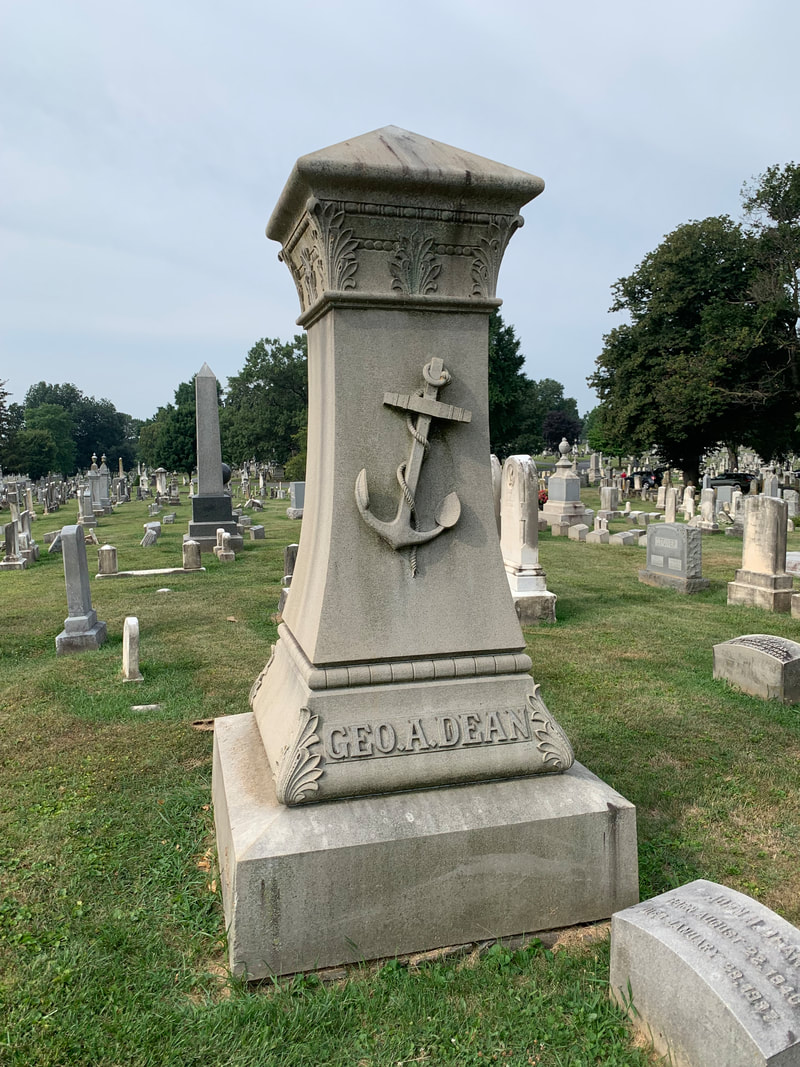 George A Dean's monument includes an anchor which pays homage to his former naval service and career in the shipping industry. It also symbolizes hope for eternal salvation according to funerary inconography meanings associated with this symbol. I like to think that it also represents the fact that his legacy is "anchored" here in Frederick, as the rest of his family moved westward. One interesting point to make on the monument. In our collection here at the cemetery, we have an old photograph of Mount Olivet's Area A, taken around 1909-1910. Interestingly, the large Dean monument with the anchor is visible in the shot. This means that Mr. Dean erected this monument at least 12 years before his death in 1922. I theorize that this was likely done at the time of Emma's death in 1901. George’s second wife, Alice, would join him here upon her death in 1953. Son James Hamner Dean and his wife, Malinda Louise (Horine) Dean would buried in the lot in the early 1970s, and their son, John Horine Dean would be buried here in 1997. William and William H. R. Dean As for the pioneering Deans that headed west, George’s father William Dean made it to Missouri with Catharine. They appear in the 1870 census living with son William H. R. and his young family in Watson, NIshnebotna Township, Atcheson County, Missouri. The gentlemen appear to have revived their dry goods business. The family moved to Lewis Township in Holt County, Missouri and this is where they can be found in 1880. William (2nd) died in 1886 and one can find his gravesite, along with that of wife Catharine in High Creek Cemetery, Rock Port, in Atchison County, Missouri. As said in the George’s biography from 1910, William H. R. died in Iowa in the year 1907. His death and funeral on November 15th made front page news in his newfound home far from Frederick, Maryland. He and wife Elizabeth are buried in his father’s plot at Rock Port, Missouri. James H. Dean The last of this immediate family to cover is James H. Dean. This man of familiar name was not a “Rebel Without a Cause” or a country-western musician turned into a sausage salesman. James Dean was one of the early assistant superintendents of Yellowstone Park as mentioned earlier. James H. Dean was born around 1844 in New Market. His future wife, Rebecca T. Pickings, was born in Maryland around 1845. Dean moved with his family into Frederick and went to work as a steward at the Maryland School for the Deaf. The school had just opened the previous year and served about 60 students, 25 of them that had never received any formal schooling. The school taught sign language, the finger alphabet, writing, speech, lip reading, along with vocational skills such as shoemaking, carpentry, printing, dressmaking, sewing, and housework. He held that position until 1877. At that time, he went to work for a hotel and restaurant called the Old Dill House on the northeast corner of West Church and Court streets. I wrote extensively about this location in a former story in April 2020. By 1879 the hotel became known as the Carlin House, after proprietor Frank B. Carlin, and finally the Park Hotel. James and Rebecca can be found residing here in the 1880 US Census as he held the position of hotel manager. (As an aside, I found James' brother, George, living here in the 1900 census.) In 1883, James H. Dean traveled to Yellowstone with Rebecca to work as an assistant superintendent. He would serve under Superintendent Patrick H. Conger in 1883 until early summer of 1885. He spent the summer of 1884 with his family at Norris in a small house built for them by the federal government. However it was unsuitable to withstand the cold, harsh winters and they moved to Mammoth to live that winter. He became clerk at the Firehole Hotel in 1885, serving there for several years. In 1888 he was hired to manage the Cottage Hotel at Mammoth, the year before the G. L. Henderson family sold the operation to the Yellowstone Park Association. Dean managed the National Hotel in 1891 and was appointed Superintendent of YPA in 1892, having supervision of all the park hotels. His office was located in the National Hotel. He served as president of the Yellowstone National Park Association from 1896 (or 1898) until 1901, when Harry Child, Edmund Bach and Silas Huntley bought out the company. Around 1902, he resigned from the company and came back to Frederick to live with a nephew Mr. Charles Pickings near Harmony Grove, north of town where Clemson Corner is today. By 1910, James and Rebecca had moved to California and were living in Coronado Beach, near San Diego. James died October 17th, 1919 in Coronado Beach after being in ill health and suffering a stroke the previous year. He was about 75 years of age. His mortal remains are at the Cypress Hill Mausoleum and Chapel in San Diego. 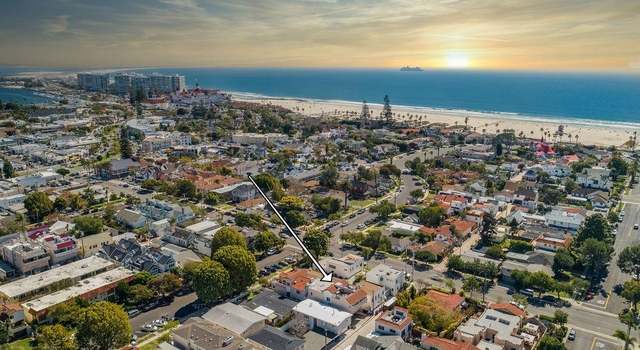 James H. Dean's address in 1910 was 942 D Street which is denoted by the arrow. Although a newly constructed villa sits here today, this must have been a beautiful retirement location in paradise for James H Dean and his wife, Rebecca which was just a few blocks from the Pacific and the famed Coronado Hotel which appears to the upper left of this photo I was interested in finding many newspaper clippings in the early 1910s that reported George visiting his brother (James) in California and practically spending his winters there. You could say that the family member that stayed behind back in 1870, eventually did "go west," even if it was just seasonally.
George A. Dean's eye-catching monument in Mount Olivet's Area A serves not only as a testament to his life and accomplishments, but also as a lasting reminder of those immediate family members who took their dreams west to places such as Missouri, Wyoming and California.
0 Comments
The word “orphan” is a multi-faceted one that can be used as a noun, verb and adjective. Of course, the noun version is most common and defined in Merriam-Webster’s Dictionary as “a child deprived by death of one or usually both parents, a young animal that has lost its mother, or one deprived of some protection or advantage.” When it comes to cemeteries, orphans are an obvious result of the death of both parents, being cut down in the prime of life. In some cases, the “orphaning” is the result of one parent dying, and the widowed parent not being capable to raise a child (or children) on their own. Then there are those cases that were not talked about, wherein a child may have been born out of wedlock. Although the older concept of orphans seems to be a thing of the past, thanks to advances in medicine/healthcare (keeping parents healthier), and the practice of adoption becoming more accepted over the last century. I see this situation of “orphaned” children often in my geology and historical research endeavors. Even in my own family, I had a great-grandmother (on my father’s side) who lost both parents to illness as a young teen, thus causing her and siblings to be raised by her grandmother. On the other side of the family, my mother’s mother (grandmother) lost both parents by age six. She almost went into an orphanage, a residential institution for the care and education of orphans. Thankfully, her oldest sister turned 18 days before a court ruling which resulted in permission given to said older sister to be recognized as her legal guardian. Many children were not as lucky as those family members I just mentioned of mine. We had orphanages here in Frederick, two of note included the Loats Orphan Asylum (1879-1956), once housed in the Baltzell home on East Church Street. This building has served as home to the Frederick Historical Society/Heritage Frederick for decades since the old orphanage was closed. Immediately next door, an earlier established orphanage once existed across the alley under the purview of the local Protestant Episcopal church here in town. Mount Olivet has a lasting reminder of that benevolent institution. 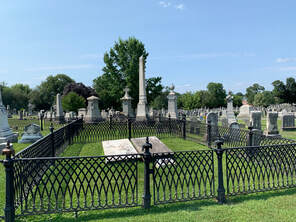 Hughes Lot (Area G/Lot 59) Hughes Lot (Area G/Lot 59) To find it, you have to make your way to a section within Area G that is enclosed with an iron fence—what I guess you could call our only “gated community” within Mount Olivet. Known commonly as the Potts lot, this is the site of the final resting places of several members of prominent past families including the namesake Potts, Murdochs, Marshalls, Ross’ and Francis Scott Key’s parents. On the north side of this large burial lot are two additional lots enclosed by ancient iron fencing. One lot (G 59) encloses the grave of an 1812 veteran named Daniel Hughes (1774-1854) who had married into the Potts family. The other (G58), located directly behind the Hughes lot, was once owned by the Episcopal Female Orphan Asylum of Frederick. Today it is owned by the All Saints’ Protestant Episcopal Church. It was established for the burial of orphans in conjunction with the church’s former Orphan House on East Church Street. The Orphan House and Episcopal Free School Society of All Saints’ Church There are two prime sources for information on the All Saints' Orphanage. One was a small pamphlet written by Eleanor Murdoch Johnson (1860-1945). Miss Johnson was a devout member of All Saints' and a longtime member of the board of managers for the Episcopal Orphanage. In 1915, she published her work: A History of the Orphan House and Episcopal Free School Society of the All Saints' Church FrederickTown, Maryland 1838-1915. The daughter of John Ross Johnson and Maria Louisa Ann Hammond died at age 84 and is buried about 25 yards from the Orphanage Lot in Area E/Lot 62. 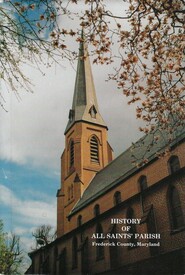 Another source of information comes from the History of All Saints Parish (Frederick County, Maryland), a book researched and written by Ernest Helfenstein with help from two of my friends among others, the Carroll H. Hendrickson and C. Lynne Price. The following passage comes from this work published in 1991. As early as 1833 the lot on which the present orphanage stands was occupied by a small building in which was conducted the “school of Industry,” a fee school. As the attendance of this school increased from eight to thirty-two scholars the idea of an Orphan Home and School developed in the minds of the ladies of the congregation and by a series of “Fairs” a fund for the erection of a suitable building was started. In March, 1838, an Act of Incorporation was passed by the Maryland Legislature and the building was erected in 1839 by George Cole. This was made possible largely through the generosity of Mrs. Eleanor Potts who conveyed the lot upon which the Orphan House now stands to the trustees, the lot having been purchased by her for one thousand dollars from the “Vestry and Council of the Lutheran Church, Fredericktown.” Daniel Hughes’ wife, Elizabeth (Potts) Hughes served on the first Board of Managers of the new orphanage, as was her mother (Eleanor Potts). For almost a century, this institution would serve as a haven for many orphan children and "in the world today are many useful women who can refer with pleasant memories to the time they were taught to read, write and sew at All Saints’ Orphanage and School." In 1856, Richard Potts (a trustee of the operation) wrote: “The congregation of All Saints’ is in prosperous condition, a new and beautiful church having been built, in a short time will be ready for consecration. But whatever gratulation may be allowable upon the result, the most sparkling gem in their diadem will be this hopeful nursery and home for the little ones.” Mount Olivet Cemetery was officially dedicated in late May, 1854. Three months later, on August 30th, 1854, the Episcopal Female Orphan Asylum of Frederick purchased Area G’s Lot 58 consisting of eight grave sites. Interesting of note, nearly 44 years would pass until a burial would be made here. The date would be June 17th, 1898 and the decedent was 12-year-old Bertha Virginia Cleary who had died the previous day, June 16th. News of Bertha’s death made the local newspaper, and so did her funeral. The article made known the fact that this was the first death related to an inhabitant of the girls orphanage. It would continue to be so for the next 48 years. As you could imagine, I haven’t been overly successful in attaining additional info on Miss Cleary, but we have a birthdate of December 6th, 1886 and her obit claimed she was a native of Frederick. Now the local papers have her last name spelled as Clary. However, our interment book spells the name as “Cleary,” and the stone does the same. I found no other Clearys in our cemetery, and 19 Clarys. The latter was more prevalent around here with many living in the Unionville/Mount Airy area in the eastern part of the county. I was better prepared to simply chase after Cleary so I searched the Frederick census records for Clearys. In 1880, I found three girls with this surname as students of the Academy of the Visitation here in town, roughly two short blocks from the All Saints’ Orphanage. The ladies can be found as natives of Howard County, living with stepfather Alexander A. Fahey and their mother Isabella Cleary. This raised a flag for me and put my focus on the three girls as longshot potential mothers of Bertha Virginia Cleary. I felt that since they were familiar with both Frederick, and likely the All Saints’ Orphanage as well, that perhaps they may place a child here—especially one holding the Cleary surname. If so, we would certainly assume the child was born out of wedlock—but absolutely no judgment here. I also thought of the stigma assigned to Catholic girls and a potential illegitimate child. And yes, Billy Joel’s “Only the Good Die Young” did cross my mind—and remember that our subject does have Virginia as a middle name, mind you. I soon learned that the girl’s father, William Cleary (b. 1814) and a native of Ireland, had died in 1878. Their mother, Isabella (b. 1838), was the daughter of Baltimore merchant Edwin Bailey as I found her in the 1860 US census. Miss Bailey married William Cleary, and later would remarry Mr. Fahey as mentioned earlier. She appears to have died around 1885. Daughter Helen Cleary (1864-1937) married Alexander Benzinger in 1885 and had four sons, the first (Fred) born in November, 1886. I found it ironic that the family also had an orphaned boy (John Keenan) living with them here in Howard County in 1900. Laura Gertude Cleary (1866-1929) married Edward Aloysius Benzinger on October 25th, 1887 at the Baltimore Basilica of the Assumption. According to a family tree posted on Ancestry.com, she would go on to have four children. Youngest sister Mary Grace is residing with the family. I found a few mentions in local newspapers of Wilhelmina Maud Cleary (1869-1949) making return visits to Frederick to visit old friends (teachers/classmates). She married John Daniel Simering in 1889 and went on to have six children. The family lived in downtown Baltimore and later Elkridge. Nothing definitive at all as it was just the hunch of a curious historian trying to find the parents of an "orphaned orphan" here in Mount Olivet. Like I said, it could be a clerical error in spelling with the right name being Clary. I will leave that research rabbit hole for someone else. In the All Saints' History book, I found mention to an oral interview conducted with parishioner Nellie Effie Wenner. She actually lived at the orphanage 15 years after the death of Bertha Cleary, having suffered almost fatal burns at the age of five. Mrs. Shaw, born in 1908, lived at the orphanage for 15 years and discussed the duties assigned to the inhabitants of the home. She said: You are never too little to work! The usual number of 15 girls attended Sunday School, followed by the 11 o'clock service, during which they sat "way up front" near Judge (Glenn) Worthington's family. Evening prayer saw them back in church again." Many of the girls went into parishioners' homes as domestics or as personal maids until they could be on their own. Mrs. Shaw remembered women board members who took personal interest in the girls' welfare. Birthday parties were also thrown for the orphaned girls as well. An annual picnic was held for the children at the farm of Joseph D. Baker, namesake of Baker Park. These gestures helped instill a life-long dedication to All Saints' Church, and a desire to help others more needy than herself. Nellie Wenner married Charles Henry Shaw and worked as a seamstress as an occupation. She would pass away in 2001 and is buried in Mount Olivet's Area MM, Lot 139. Here (Area MM) is where are buried many of those re-interred from the old All Saints' Graveyard including Governor Thomas Johnson, Jr. and parish standouts like Rev. Maurice D. Ashbury (1902-1996) As far as the legacy of the All Saints' Orphanage, I return back to Mr. Helfenstine's history:
“In the mid-1940s, changing social conditions and theories brought to an end an All Saints’ institution that had perhaps been the most important outreach program of the parish for over 100 years. In April 1946, an announcement was made by the Board of Managers that the Episcopal Orphan House and Episcopal Free School Society of All Saints’ Church would be closing. Through the years, generations of women had given themselves to help “destitute female orphans,” and many board members were descendants of the first board women. Just as the opening of public schools brought to a close the Free School, so a new method of placing children in foster homes replaced the Orphan House. Special care was given to finding homes for the only two girls left in the orphanage, and on June 14, 1946, they made their farewells. In November, the building was sold for $20,000 to Drs. Tyson and Lansdale to be converted into apartments.”  A very memorable film came out in 1985, my senior year of high school. The name, The Breakfast Club, may have seemed a bit misleading, but the theme song, by British alternative rock band, Simple Minds, was quite infectious, and still is—“Don’t You (Forget About Me).” The movie centered on a unique situation to build a motion picture around as it captured the interaction between teenagers from different high school cliques spending a Saturday morning in school detention together. This took place under an authoritarian assistant principal serving as chaperone. Producer/director John Hughes was responsible for so many great movies during the “Big Eighties” decade, including this comedy/drama in which one will find several lines that will stand the test of time. The one that I always remember came from Vice Principal Richard Vernon in which he threatened one of the students with the immortal stern warning: “Don't mess with the bull, young man. You'll get the horns.” I recently fondly recalled my own father using this quote often on my brothers and I after seeing the movie. It somehow popped into my head as I rounded a bend near Area K in Mount Olivet while driving back to my office in the mausoleum complex. Within this minute section of the cemetery, on the northwestern corner adjacent Carrollton Street, I saw a good-sized gravestone with the name of Van Horn upon its lower face. Fittingly, for my Breakfast Club theme above, the marble marker in question featured a visual backdrop of a public school (Lincoln Elementary). My brain works in strange ways and how Van Horn could trigger a movie, and movie line, from 36 years ago I can’t exactly explain….but I’ve learned to live with my misgivings at this point. I wasn’t familiar with this Van Horn surname so decided to investigate then and there. I parked nearby and got out of my Jeep to investigate a bit further. I found four names carved upon the front of the stone: Benjamin F. Van Horn (1839-1898) Elizabeth J. His Wife (1844-1915) John F. Van Horn (1870-1920) Bertha His Wife (1864-1921) When I got back to my desk, I had that stupid line (“Don't mess with the bull, young man. You'll get the horns.”) running through my mind and conjuring up the scene from the movie. The theme song followed suit, so I put in my EarPods and played the Simple Minds classic while I actually did a search for the Van Horn lot in our computerized database. I kid you not, just a typical day working at an historic cemetery, right? Immersed in 1980s nostalgia at the moment, I began thinking of my family’s first computers which I used as a kid—the Commodore Vic 20 and its much-improved successor, the Commodore 64. Anyway, I was suddenly drawn back to the current day and noted that there were five persons interred in Area K/Lot 30. The four individuals named on the stone included Benjamin and his son John and their respective wives as the stone clearly states. In our interment records, an additional family member is buried here but his grave is unmarked. This is Benjamin Van Horn’s son James Henry (1875-1926). So, I thought to myself, what the hell, let’s find out more on the Van Horns and see if they would have been the type of folks who would give, or receive, the proverbial “horns,” Vice Principal Vernon had proclaimed. I would soon find out that this family seemed as colorful as some of the cast of characters featured in The Breakfast Club, and two sons definitely led lives that would warrant Saturday morning detentions had that been a thing a century earlier back in the 1880s. They were reminiscent of actor Judd Nelson’s rebel John Bender. Meet the Van Horns Benjamin Franklin Van Horn was born in the year 1839, this date according to his gravestone and info found in our records. This became problematic for me because census records seemed to indicate that our head of family was born a bit later in 1843. The son of Benjamin and Ann Van Horn lived in Fairfax County, Virginia, where he would remain for several decades of life. In looking back at the Van Horn lineage, the family appear to have fittingly come to New Amsterdam (New York City) in the 1650s from Holland. They lived in Bergen County, New Jersey and moved to Bucks County, Pennsylvania across the Delaware River. Our subject’s grandfather seems to be the one who moved to Northern Virginia, where Benjamin (Sr.) was born around the year 1810. Benjamin’s father (Benjamin Sr.) was employed as a farm laborer, and he, himself, would follow in this line of work. I couldn’t find a record of Civil War participation by young Benjamin as I thought there could be a strong possibility that he may have served for his native Virginia based on his age. Regardless, he and his family would certainly feel the perils of war in this part of the state, a stone’s throw from the site of two nearby battles at Manassas and the legendary Bull Run creek. (Note: the "Bull" connection) Benjamin would marry his wife, the former Elizabeth J. Underwood, on December 10th, 1867. She too was from Fairfax, the daughter of farmers John and Elizabeth Underwood. I would also find that the couple were commonly known by the nicknames of Frank and Bessie. In the 1870 census, I found the couple with first child Nancy (aka Nannie) who had been born in 1868. They were living in Dranesville, Virginia in Fairfax County near present-day Herndon and not far from Sterling. Frank continued working as a farm laborer over the next decade as more children would grow the Van Horn brood. By 1880, there were four additional sons: John Franklin (b. 1870), Robert William (b. 1873), James Henry (b.1875) and Samuel Tipton (b.1878). They were now living in southwestern Loudoun County at a place called Mercer, located near Aldie and west of US15. Sometime in the Big Eighties of the 19th century, the Van Horns (or Vanhorns) relocated north of the Potomac River and in Frederick City. I can say with authority that they were here and living on Carroll Street by 1887. This was strictly a result of my discovery of the first mention of Van Horns in the local Frederick newspaper. I have to say that people make the papers all the time, but when the Van Horns made the news, you were usually entitled to something wildly evocative. I continued to find small bits about the family in The Frederick Daily News. Mrs. Van Horn, perhaps reeling from more tom foolery propagated by her sons, was admitted to Frederick’s Montevue Home in 1890 for an undisclosed illness. In April, 1895, son John F. had taken a job with the famed showman Pawnee Bill of Oklahoma. Also known as Gordon William Lillie, this gentleman had become a well-known American showman and performer under the stage name Pawnee Bill. He and wife May, a female marksman in the style of Annie Oakley, specialized in Wild West shows, including a short partnership with Maj. William F. Cody—Buffalo Bill. The American frontier would soon come to Frederick in the form of Pawnee Bill’s Historic Wild West Show. His first local appearance was here at the Great Frederick Fair in 1888, but more engagements would follow in subsequent years. Joseph Walling, a nearby cemetery decedent only a short distance from the Van Horn’s Mount Olivet Area H/Lot 220 location, also worked for Pawnee Bill. In 1894, the western entertainment hero began using Frederick as his official “Winter Quarters” for his animals and set backdrops, etc. The exact location was the farm of Samuel Hoke, just north of Frederick City at Ceresville. Where Walling actually went on the road with Pawnee Bill’s traveling entourage entitled "Pawnee Bill’s Historical Wild West Indian Museum and Encampment Show," John F. Van Horn seemed to have a much shorter, and less desirable, adventure with the Wild West star. A couple years later in 1897, it appeared quite clear that John’s restlessness quite possibly could have been remedied by a tour of the country with Pawnee Bill’s traveling show. I find it interesting that no one in John Van Horn’s family offered to pay the fine of $5.85, thus causing the defendant to spend 30 days in jail. Sounds like he deserved “detention,” not to mention his own private “Frederick Breakfast Club.” Although John would return safe back home eventually, a mortal blow (both literally and figuratively) was about to hit the Van Horn family shortly before the end of May, 1898. Benjamin Franklin Van Horn Jr. would have a bad experience with the railroad. I should clarify that it was a very, very bad experience. Unlike John’s situation of simply quitting a job, Mr. Van Horn died suddenly at the hands of the Baltimore & Ohio Railroad down near the Monocacy Junction south of town. I still find it odd how descriptive the newspapers were back then, often painting gruesome and ultra-realistic depictions of accidents and other tragic events. There was zero degree of sugar-coating, but I assume readers knew what to expect, and were seldom surprised by these graphic reports. I also found irony in the fact that Frank Van Horn met his death along a curve of the railroad, while today he was laid to rest along a curve in the Mount Olivet roadway a mile to the northwest of where his accident occurred. Frank would be buried on the same day of his unfortunate meeting with fate—May 28th, 1898. As said earlier, Mr. Van Horn would be placed in Area K/Lot 30 of Mount Olivet. Following Frank’s death, I found this family somewhat mysterious, but quite entertaining and interesting at the same time. By 1900, Elizabeth Van Horn was listed on the US census of that year as head of household and had all four sons living with her. I would eventually lose track of Mrs. Van Horn and could not find her in the 1910 census, as she was not residing with any of her children from what I could see. Elizabeth “Bessie” Van Horn would die in December 3rd, 1915 at the age of 71 and her obituary says that she had been confined at Springfield Hospital, state sanatorium located in Sykesville in Carroll County. Interestingly, I found some eerie similarities in the lives of both sons that are buried with their parents in the Van Horn family plot within Mount Olivet’s Area K. John would get in trouble again, as I found the following clipping in the paper. I did not find both John and James “Henry” in the 1910 census at first, and then I realized it was spelled Vanehorn. Both John and Henry can be found living at 463 W. South Street in a 1915 Frederick City Directory as well as the 1910 census record and I surmise this could have been the family residence for quite some time beforehand. John was married around 1900, and his wife Bertha was living with the two Van Horn brothers. Brother James “Henry” never married but was no stranger to the law as also had some dust-ups with Frederick’s finest. John F. Van Horn died at the age of 50 on December 10th, 1920. His death occurred why he was working on a farm on Carrollton Manor. John’s wife, Betha, died in 1921. As for Henry, I found another news article in stark contrast to the graphic death of the one that told of his father’s demise 25 years earlier. Three years later on August 25th, 1926, Henry was performing yard work for a local dentist named Bernard Martin Davis (1893-1981) on North Market Street who lived near the intersection with West 9th Street. Like his brother, Henry Van Horn would also expire while on the job. James Henry Van Horn was buried in the Van Horn plot, but his name was not placed on stone, likely because there wasn’t any room left. I don’t know why another stone was not purchased, but perhaps it's due to the fact that Henry never married or had children. and the other siblings left the area. Sister Nancy G. (Van Horn) Hartsock had married William Hartsock and died less than eight months later on April 9th, 1921. Interestingly, her grave is also unmarked. The other Van Horn brothers never returned to Frederick: Samuel and his family moved to Somerset County, PA and Robert had moved to Baltimore.
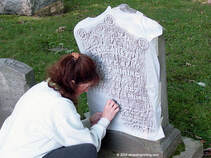 Just recently, I flashbacked to a childhood memory in which my father had me retrieve a box of belongings from his youth from our attic. Among the contents was a yellowed/tanned roll of paper about two-feet wide and held intact by two rotting rubber bands. He excitingly had me unfurl this supposed relic of family history. We laid it out on the dining room table, using random canned vegetable containers (cans) to hold taut the four corners. When revealed, I saw a depiction of my GGG grandfather's headstone from a cemetery in Delaware City, Delaware. My dad went further in explaining to me that this "depiction" was called a grave-rubbing, and that he had made this with charcoal in the late 1940s with assistance from his mother. He simply placed the paper against the stone and rubbed the charcoal against the recessed inscriptions on the stone. This truly sparked my imagination to what the real gravestone looked like in "living color" and in context to its surrounding of other graves within a small Presbyterian churchyard. I would get my chance the following summer in 1976, as my father would bring my brothers and I to the actual gravesite while on a trip to visit my grandmother in Delaware City. I guess you could call it my very first "Find-a-Grave" experience. Grave rubbings seem to be a thing of the past, especially when you think of the ease in effort and instant gratification brought about through smartphone photography technology. Besides, when it comes to the fragile nature and safety necessary in approaching historic stones, taking pictures is certainly a better option. Last week, our Friends of Mount Olivet membership group hosted an interesting event, a “Find-a-Grave Day” at the cemetery. Now, that said, I know what you’re probably thinking, as this seems like we are the proverbial “Masters of the Obvious” here at Mount Olivet by seemingly putting on an activity a toddler could take part in and followed by like, nearby offerings such as Find-a-Baseball Day at neighboring Nymeo Field at Harry Grove Stadium and Find-a-Historic-Building, Find-a-Great Restaurant, or Find-a-Lily in Carroll Creek in Downtown Frederick. I know genealogy is not for the faint of heart, but the internet innovations of Ancestry.com, FamilySearch.com, Fold3, and Newspapers.com have been godsends, allowing ease in time and effort in finding pertinent records and information. A giant in this field, and one that continues to grow stronger every day, is FindaGrave.com. Best of all, it’s absolutely free to all web users. This cyber-portal allows one to make a "virtual" visit to specific gravesites in a cemetery, anywhere in the world, as long as said graves have previously been documented by a Find a Grave volunteer. Once here, the user can gaze upon the final resting place memorialized with a gravestone or plaque boasting the name of a long-lost ancestor. In some cases, you may also find obituaries, photos of decedent and links to other family members such as spouse, parents, children and siblings. The most important element, however, is that gravestone. And yes, there is an option to view the gravestone in a larger fashion.  The internet’s Wikipedia.com gives some historical background and particulars about the Find a Grave website: “The site was created in 1995 by Salt Lake City resident Jim Tipton (born in Alma, Michigan) to support his hobby of visiting the burial sites of celebrities. He later added an online forum. Find a Grave was launched as a commercial entity in 1998, first as a trade name and then incorporated in 2000. The site later expanded to include graves of non-celebrities, in order to allow online visitors to pay respect to their deceased relatives or friends. In 2013, Tipton sold Find a Grave to Ancestry.com, stating the genealogy company had "been linking and driving traffic to the site for several years. Burial information is a wonderful source for people researching their family history." In a September 30, 2013 press release, Ancestry.com officials said they would "launch a new mobile app, improve customer support, [and] introduce an enhanced edit system for submitting updates to memorials, foreign-language support, and other site improvements." In March 2017, a beta website for a redesigned Find a Grave was launched at gravestage.com. Public feedback was overwhelmingly negative. Sometime between May 29 and July 10 of that year, the beta website was migrated to new findagrave.com, and a new front end for it was deployed at beta.findagrave.com. In November 2017, the new site became live and the old site was deprecated. On August 20, 2018, the original Find a Grave website was officially retired. As of May 2020, Find a Grave contained over 180 million burial records and 80 million photos.” Now to get to the website, you can go “the long way” through a search on the international website in which you will have to enter state and county information. I always choose the more direct Google search engine method in which I go to Google.com and simply type in the following key words: findagrave Mount Olivet Cemetery Frederick MD. Voila, the Frederick Mount Olivet FindaGrave page and search engine comes up immediately and you can start plugging in names and vital dates. I recommend that you simply type in the last name of a decedent and see how many with this particular surname come up in your completed search. You can also expect different variations on certain last names and keep in mind that if you don’t get the name exact in spelling or additional vital info, the search will likely come up empty. I’d simply type in the first three letters of a last name and see what happens in trickier cases. You will see the number of memorials that have already been produced by volunteers all over the country, just for our cemetery. This number of photographs taken is mind-blowing as 75% of these have been documented visually on FindaGrave.com. Here at the cemetery, we solemnly assume that in special cases of interments re-buried here from another former burying ground, we have the correct decedent, along with proper name and vital information. We have our own data system of burials to compare this info to, but have found at times that a Find a Grave volunteer may have made a mistake in his/her information about the decedent. And in other cases, we actually can add to our records the information a Find a Grave volunteer has included. In these latter cases, I have been assisted on many occasions in respect to my featured subjects in these "Stories in Stone" articles. The Event We had our Friends of Mount Olivet event to make our members aware of the Find a Grave site for several reasons. Yes, we want our friends to prosper in their pursuit of family genealogy and this is a great tool. But outside of personal use, we want to help others around the country and world in their virtual/online visits to Mount Olivet in search of family members and other notable gravesites. So that brings us to our FOMO event last week, with a goal of assisting those hard-working volunteers who helped create our Mount Olivet presence. We actually scoured both our lot card records along with those of Find a Grave. We found plenty of names and decided to set our primary efforts in photographing statues and other special monuments in an effort we can remove or properly. We wanted to secure photos of memorial pages for friends, family or mere acquaintances. At current, there are 8,586 pages with no stone pictured. Now mind you, some of our graves have no stones, but the typical user of the site does not know this fact unless it is included on the memorial page. This is easy for us to doublecheck against our lot interment cards. So with this data, we decided to zero in on Area B, a section that has had particular attention of late by one of my trusted research assistants, Marilyn Veek. She found nearly 200 photos needed for this part of the cemetery so participants were given decedent info and necessary grave locations to photograph. Afterward, we had all participants label their electronic image files and send to Marilyn for uploading to the Find a Grave site as she, along with another lead assistant of mine, Sylvia Sears, have been volunteers of Find a Grave for quite some time already. While in Area B, I noticed one sizeable obelisk-style grave that I was curious in the fact that it had never been photographed for Find a Grave. It claimed the family name of Beck, and had an entry landing stone that read Osborn Beck (spelled unfortunately as Osburn), signifying the fact that this grave plot originally contained fencing or marble curbing. As I have stated in previous articles, lot boundary ornamentation of this kind was removed from most plots back in the early 1900s by the cemetery’s third superintendent Albert Routzahn who instituted a diligent mowing procedure with improved means-lawn mowers. He needed less obstacles for efficiency purposes for the staff and budget he possessed. I became curious of Mr. Beck’s background, but didn’t find a great deal of information on him. He was born on June 17th, 1825, in the vicinity of Woodsboro from what I gather. I found a baptismal record of the Evangelical Lutheran Church of Woodsboro from October 16th of that year which listed Osborn’s parents as Adam and Elizabeth Beck. I soon found that Elizabeth Beck was the former Elizabeth Gilbert as the couple had been married on April 15th, 1812. This parental information led me to a Frederick County Equity Court record pertaining to Adam’s estate at the time of his death in May, 1847. He died intestate, leaving his wife and eight children (William, Ann (Shank), Harriet (Baker), Henry, Osborn, Ezra, James and Agnes, the last three being minors. The record stated that Mr. Beck possessed “Land - House and Lot #52 in Woodsborough with two-story log house and shop,” a place he had lived for 9-10 years before his death. Adam Beck worked as a carpenter and son Osborn would follow his footsteps in the trade. Osborn worked alongside his father in the latter’s final years in the trade. I assume that he took over the business at his father’s passing as well. We can first find our subject by name in the 1850 US Census. Here, he is living in the Petersville area in southwestern Frederick County as a head of household which includes his wife, Rebecca, and newborn child, Laura V. (aged two months). Two other young men, both carpenters are living with Osborn at this residence. Osborn had married Rebecca on March 31st, 1849. Ann Rebecca Gilds was born September 5th, 1824 and was a native of Adamstown, where her father, George, was the local shoemaker. More children would come to the union: John F. P. Beck (1852-1934), Ida Elizabeth Beck (1856-1933), Fannie Olivia. Beck (1858-1941), and Emily Gertrude Beck (1861-1937). By 1860, the family was living closer to Rebecca’s family in the Carrollton Manor area on the east side of Catoctin Mountain. The Beck family can be found in Adamstown in the 1860 census. Osborn’s mother is living with the family as well. The early 1860s must have been an interesting time for the Becks as they would lay witness to extensive Civil war activity in the area, including generals Robert E. Lee and Stonewall Jackson leading their soldiers of the Army of Northern Virginia up the old Buckeystown Pike toward Frederick in September, 1862. I could find no record of Osborn serving in the war, and son John was far too young. I was amazed, however, to find an old article from 1917 in the Baltimore Sun newspaper in which Rebecca Beck took issue with our local Civil War heroine Barbara Fritchie. (This was published the day after her death). Osborn embarked (a fitting term) on a lifetime of working with wood. Constructing houses, barns, furniture, I’m sure he lived by the famed motto I learned from my next door neighbor, a talented carpenter as well: “Measure twice, cut once.” Osborn doesn’t have much more written about him that I could find in old newspapers. I found a brief business listing for Osborn Beck in the 1867-68 Maryland Gazetteer and Business Directory among the professionals to be found in Buckeystown. Also on this page was Adam Kohlenberg who served as postmaster and an Express agent, making him one of the best-known residents in the area. Coincidentally, Osborn’s first-born daughter, the previously mentioned Laura V. would marry Mr. Kohlenberg’s son, George Thomas. She too can be found buried in Mount Olivet in Area B/Lot 106 with her parents.  1870 US Census 1870 US Census In the 1870 and 1880 census records we see the bulk of the family still intact and living together, save for the above-mentioned Laura. They remained in the Adamstown/Buckeystown area and of note, son John F. Beck is working as a telegraph operator. I assume that John's sister’s father-in-law, Adam Kohlenberg could have had some influence here. Regardless, John F. P. Beck, also called “Pierce,” in younger days, would eventually marry in California and live out his life in the San Diego area. A memorial stone exists for him in the Beck grave plot here in Mount Olivet, but he is nowhere in our cemetery interment records. As the stone reads, he is buried in San Diego. By help from FindaGrave.com, I found two pages for this gentleman‑one for his memorial stone, and one for his actual gravesite in San Diego’s Greenwood Memorial Park. From some business listings in the Catoctin Clarion newspaper of Thurmont, I learned that our subject, Osborn, also was involved in opening/closing of graves to go along with the fact that he made coffins. In 1891, he was at the top of the list of vendors for this service. Osborn Beck, lived in Adamstown until his life’s end on October 21st, 1895. His obituary appeared in the October 22nd edition of the Frederick News. He was buried in Area B/Lot 106 the following day, joining his first born daughter who had been laid to rest here five years earlier in 1890. I don’t know when the fine obelisk monument was placed, but Mrs. Beck would live until 1917. Two maiden Beck daughters (Emily and Fannie) are buried here also, Emily in 1937 and Fannie in 1941. Osborn’s remaining child, Ida E. Beck, would marry Richard Claude Dutrow and was interred here in Mount Olivet upon her death in 1933. Ironically, Ida’s grave had not been photographed for inclusion on her FindaGrave website page. That is, until now😊
Oh, and in case you were curious, I've got some family history documented in cyberspace. A definite upgrade from that grave-rubbing I saw as a kid.
|
STORIES
|
Archives
July 2024
June 2024
May 2024
April 2024
March 2024
February 2024
January 2024
December 2023
November 2023
September 2023
August 2023
July 2023
June 2023
May 2023
April 2023
March 2023
February 2023
January 2023
December 2022
November 2022
October 2022
September 2022
August 2022
July 2022
June 2022
May 2022
April 2022
March 2022
February 2022
January 2022
December 2021
November 2021
October 2021
September 2021
August 2021
July 2021
June 2021
May 2021
April 2021
March 2021
February 2021
January 2021
December 2020
November 2020
October 2020
September 2020
August 2020
July 2020
June 2020
May 2020
April 2020
March 2020
February 2020
January 2020
December 2019
November 2019
October 2019
September 2019
August 2019
July 2019
June 2019
May 2019
April 2019
March 2019
February 2019
January 2019
December 2018
November 2018
October 2018
September 2018
August 2018
July 2018
June 2018
May 2018
April 2018
March 2018
February 2018
January 2018
December 2017
November 2017
October 2017
September 2017
August 2017
July 2017
June 2017
May 2017
April 2017
March 2017
February 2017
January 2017
December 2016
November 2016
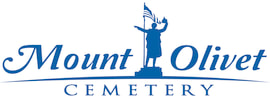
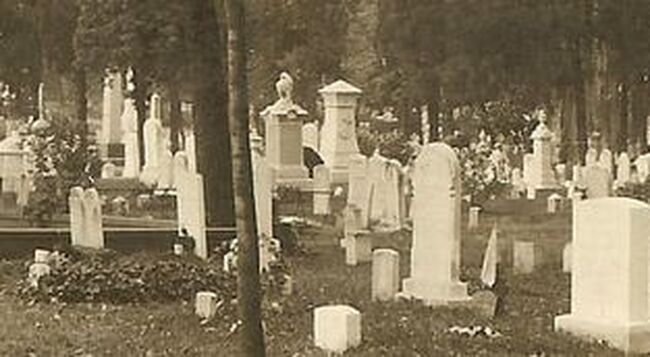
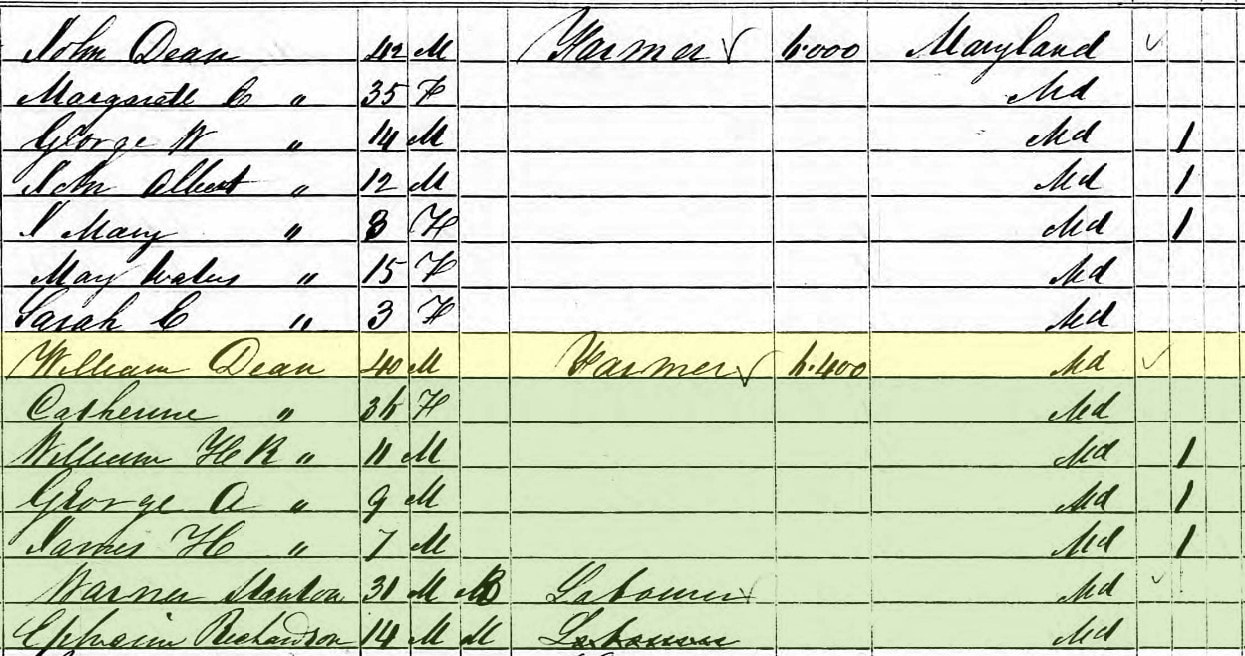
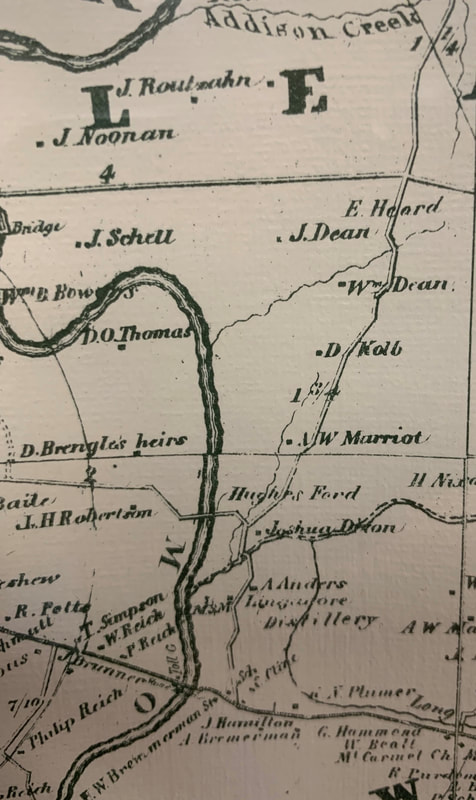
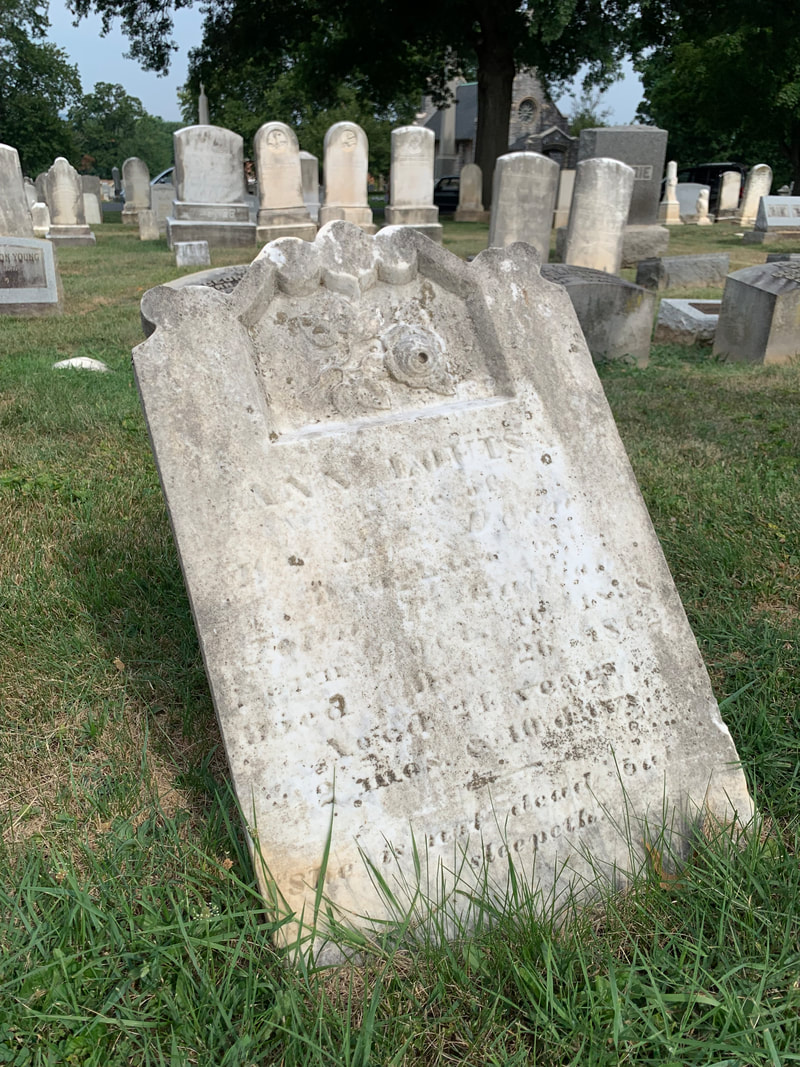
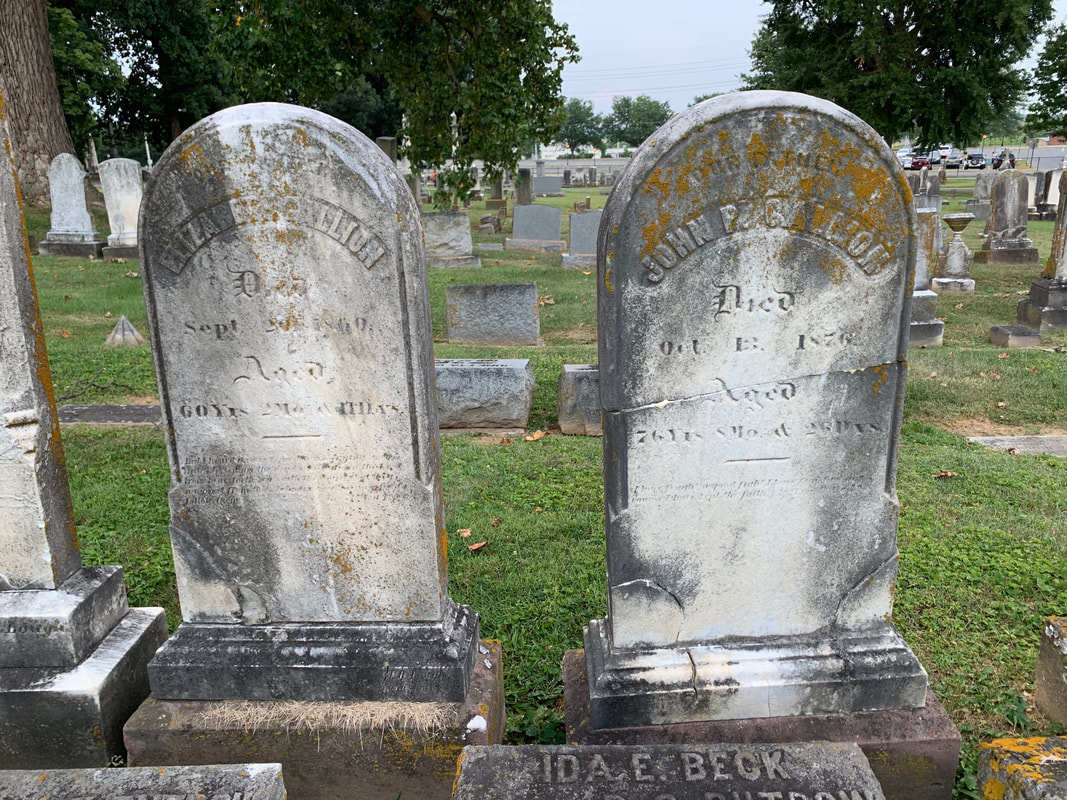
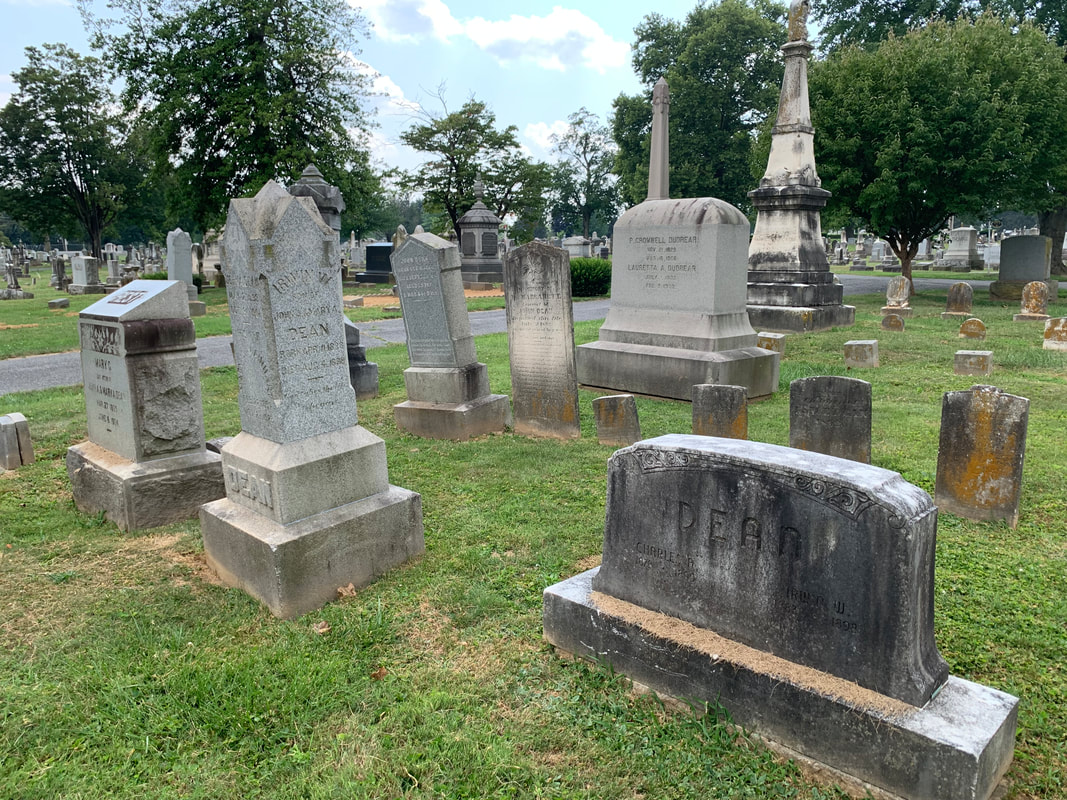

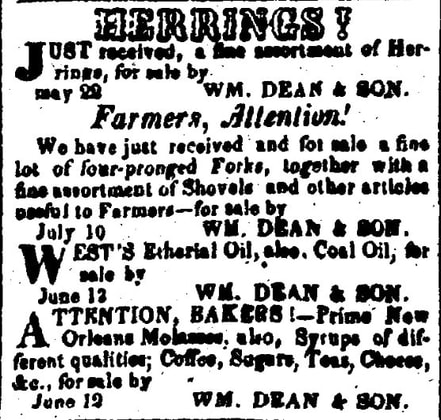
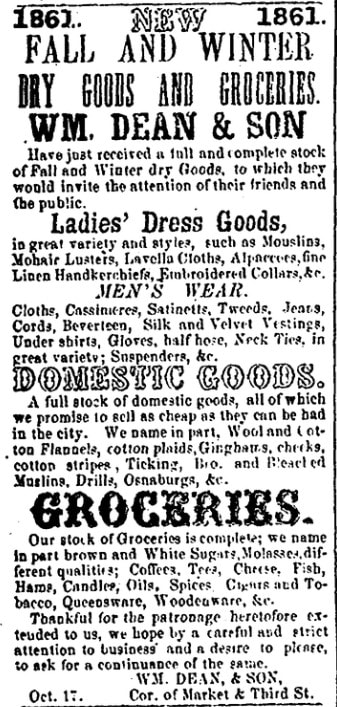
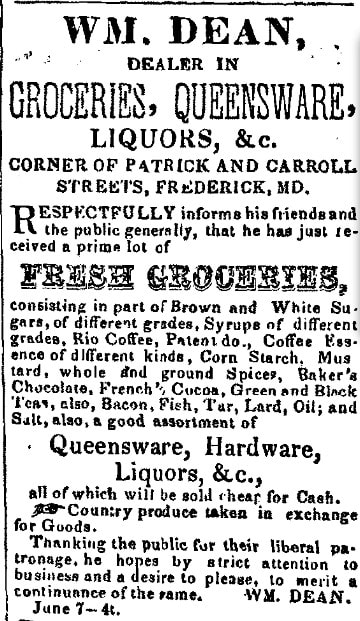
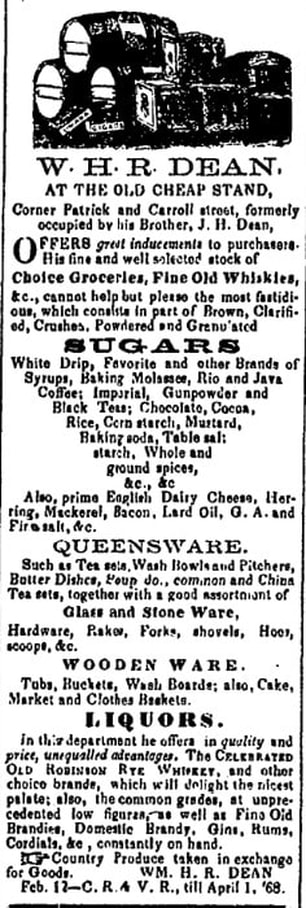
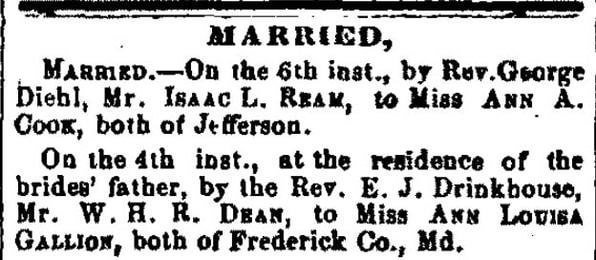

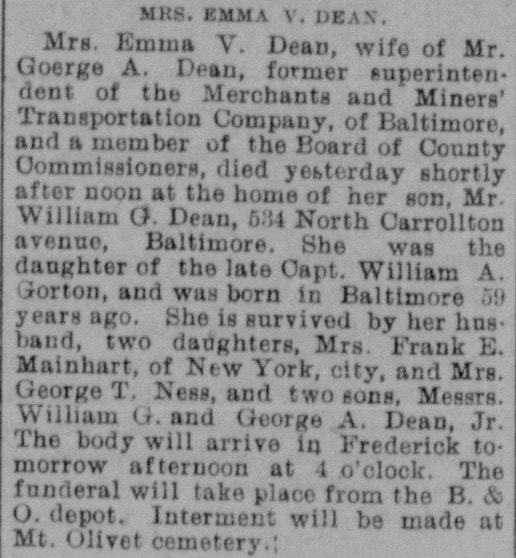
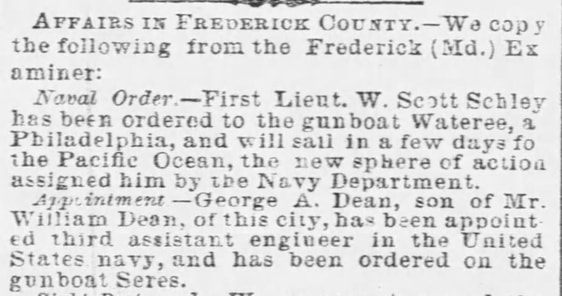
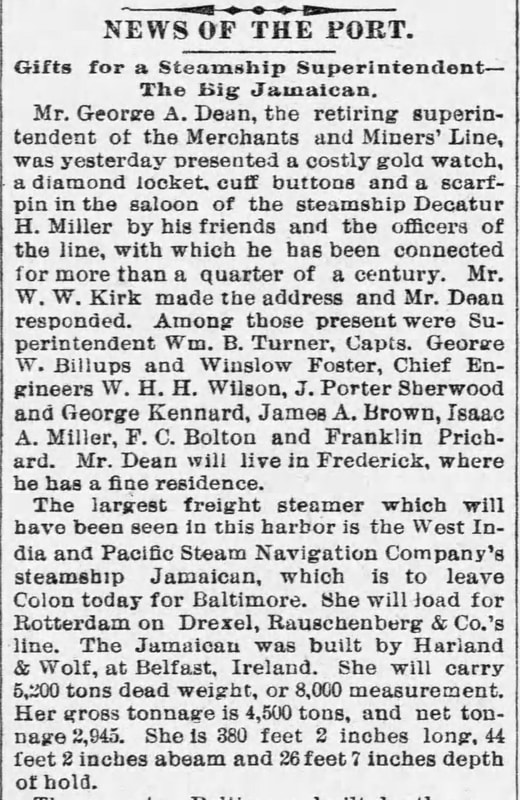
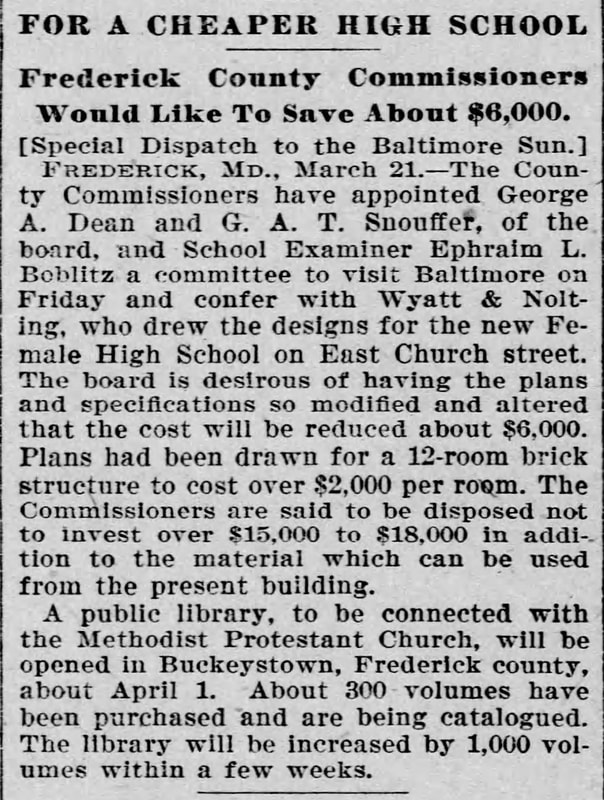
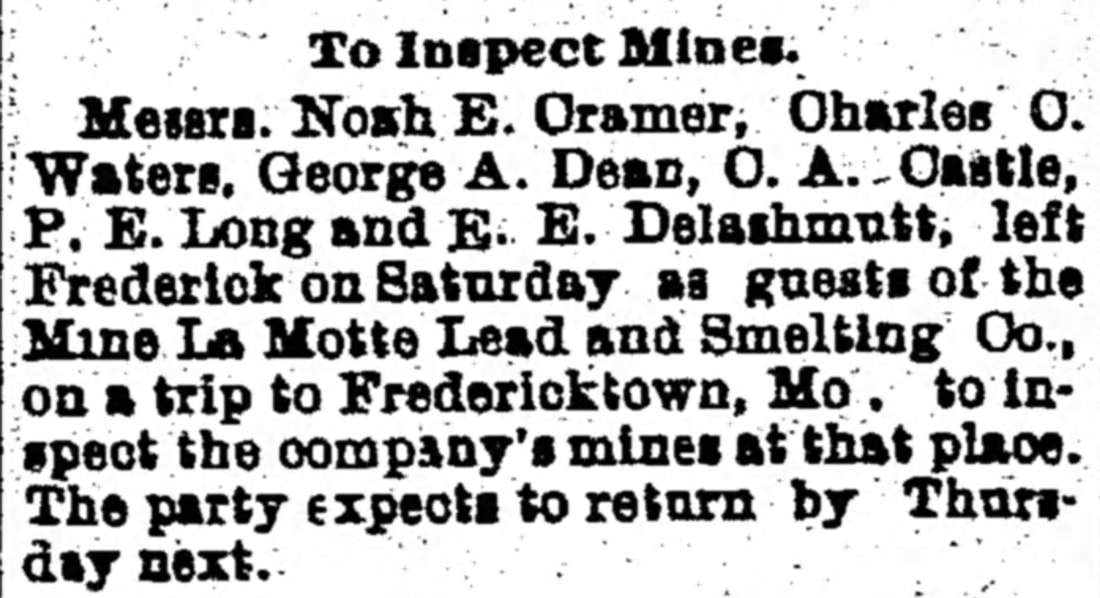
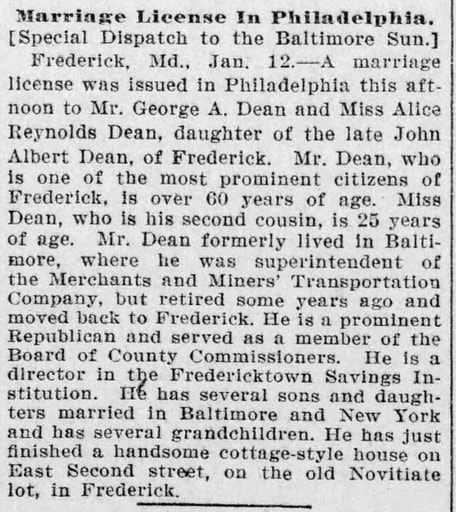
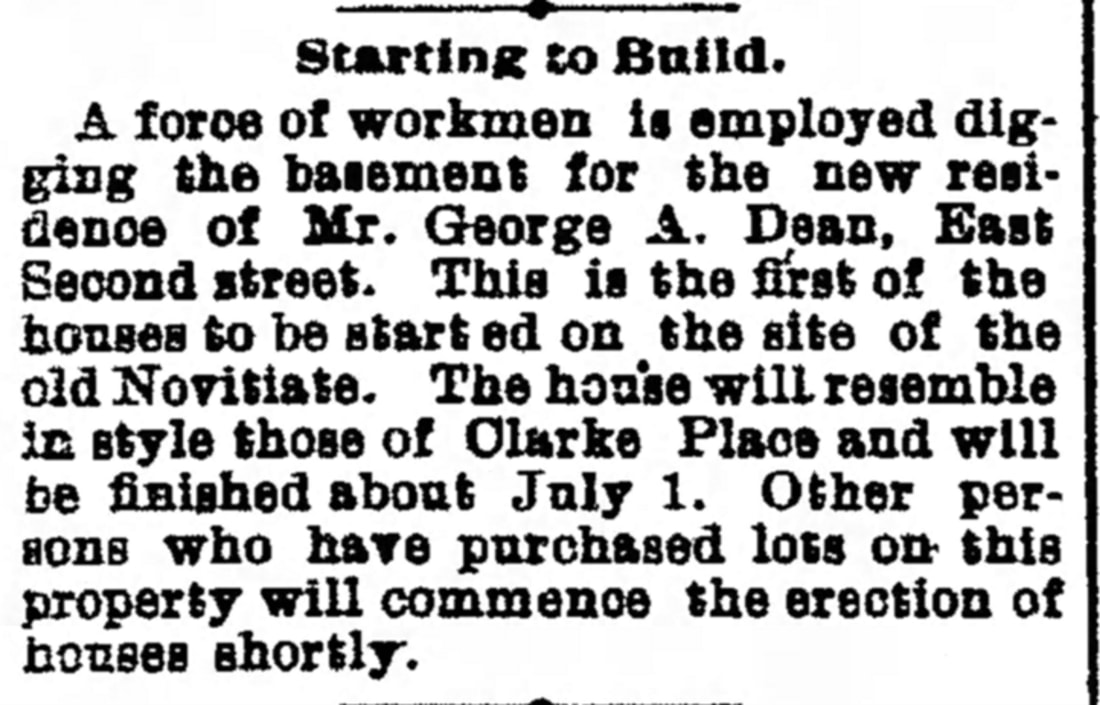
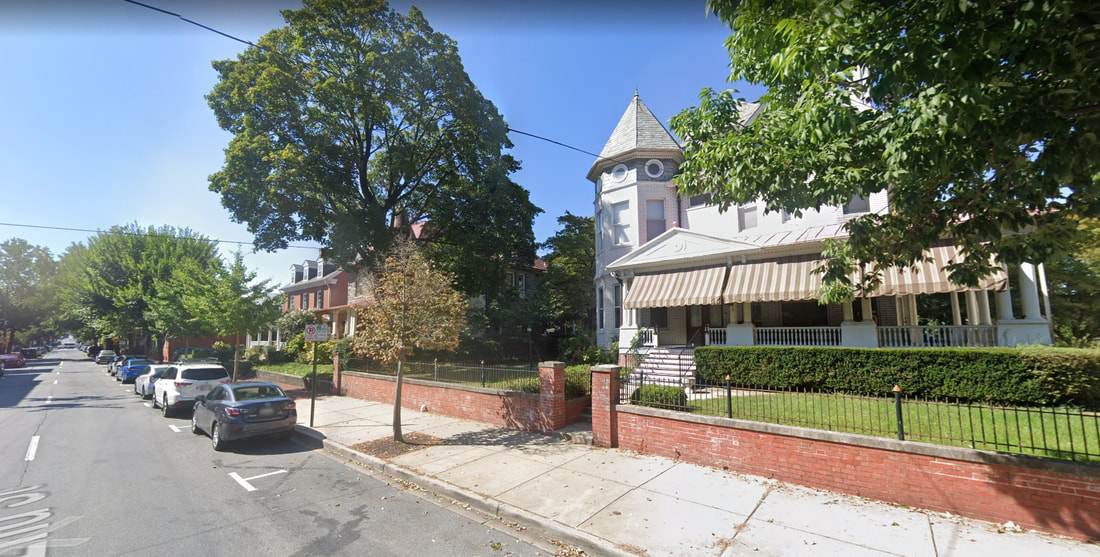
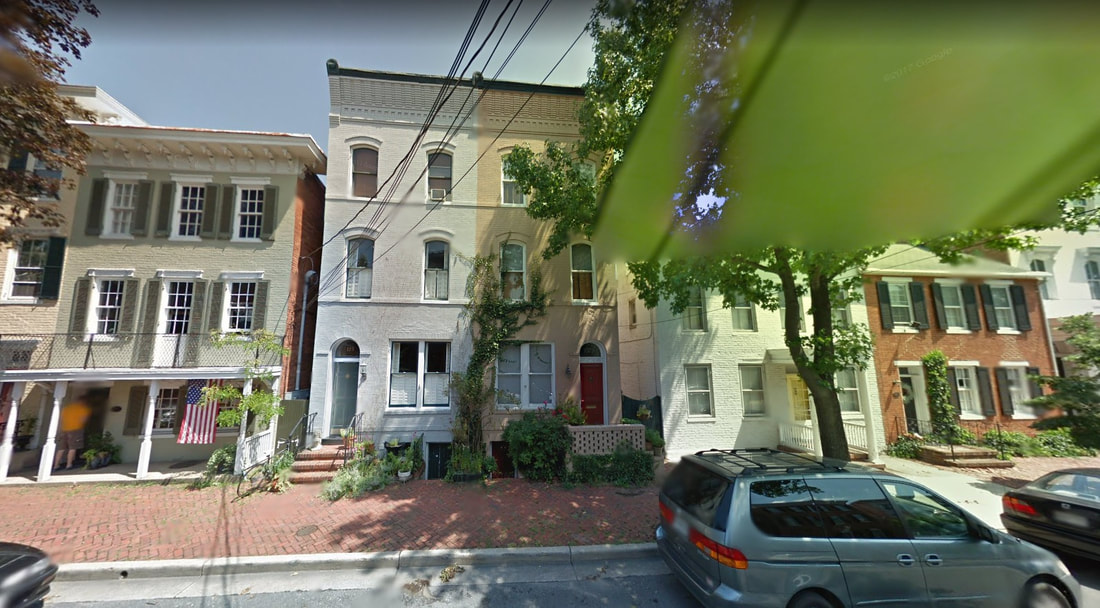

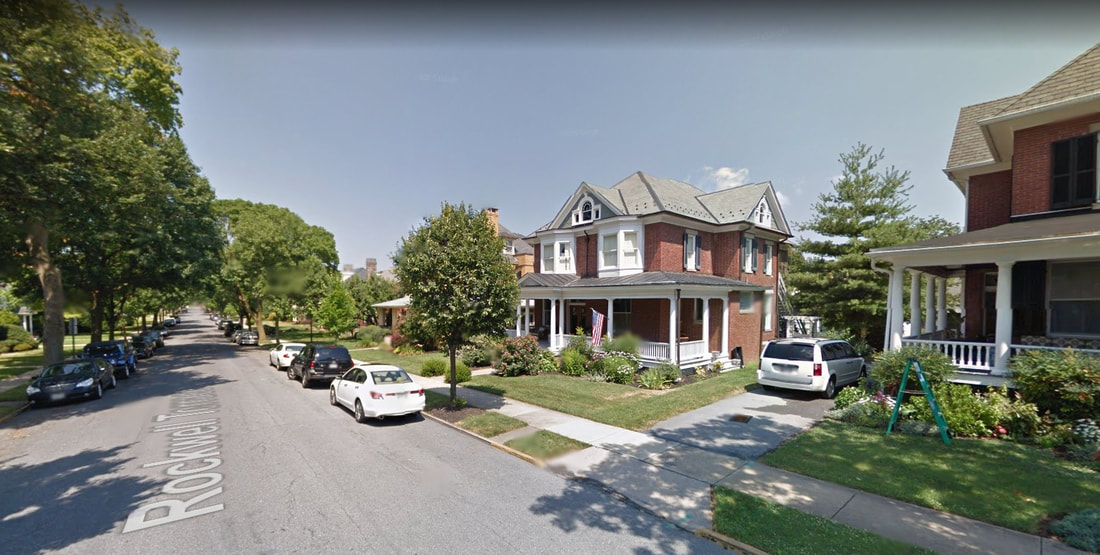
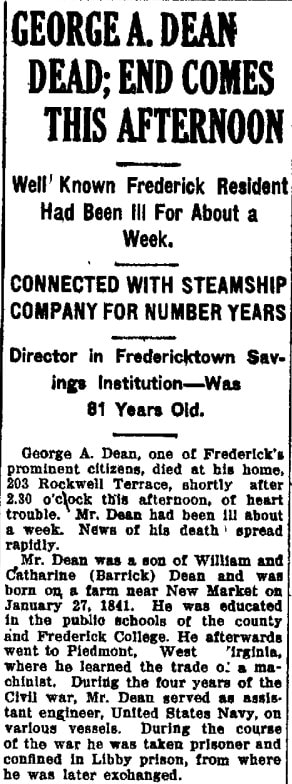
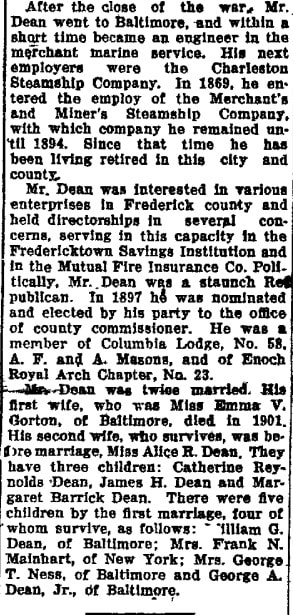
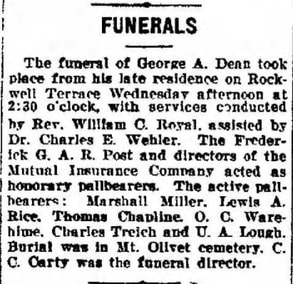
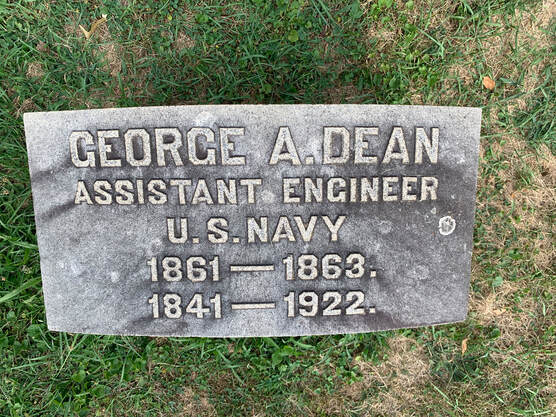
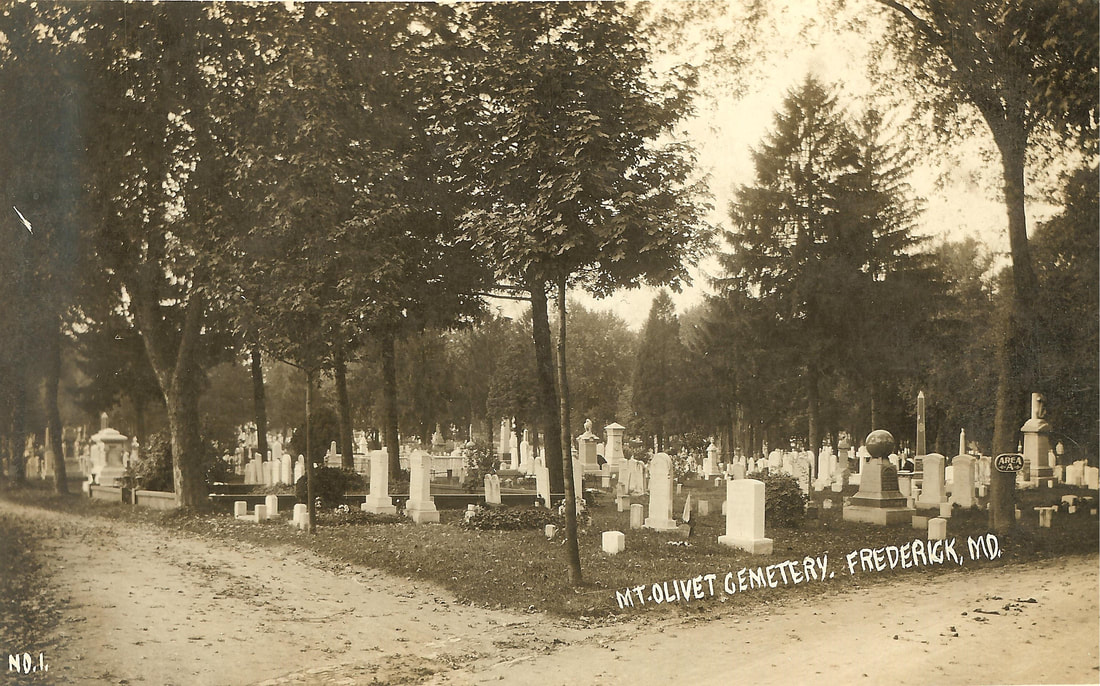
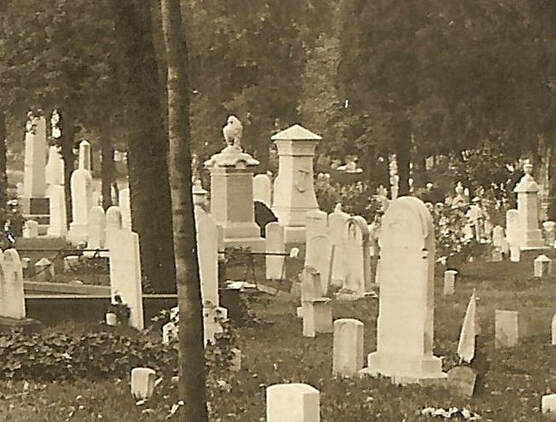
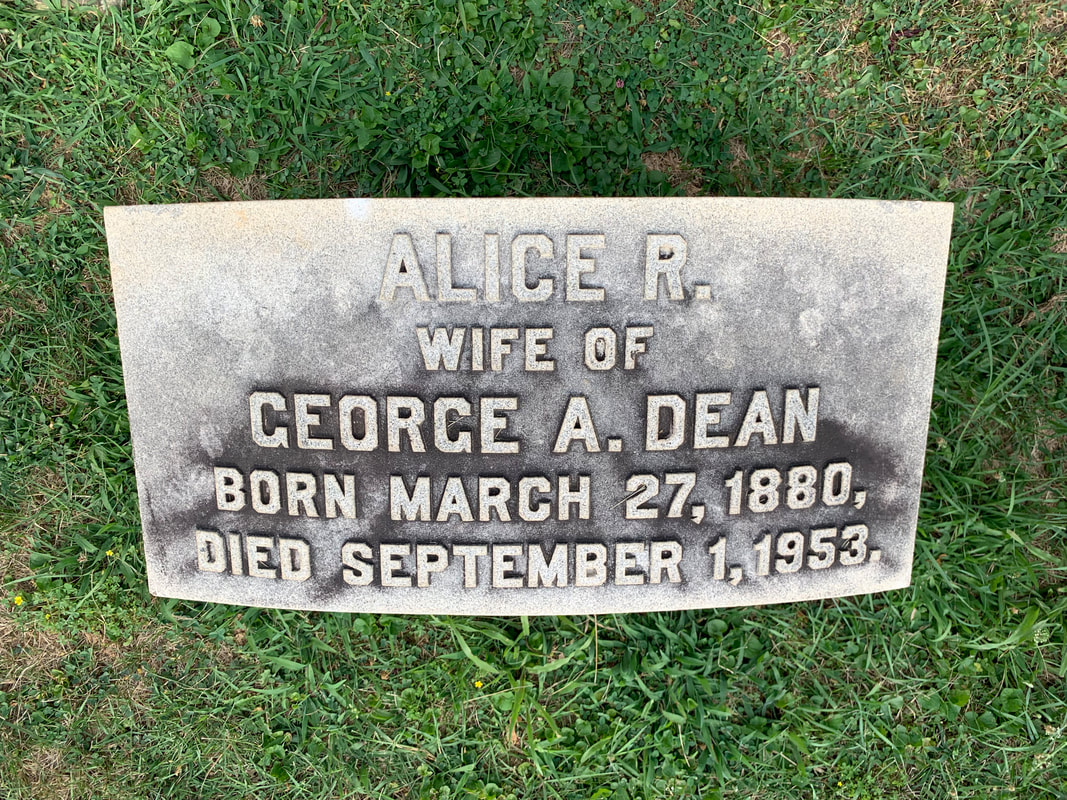
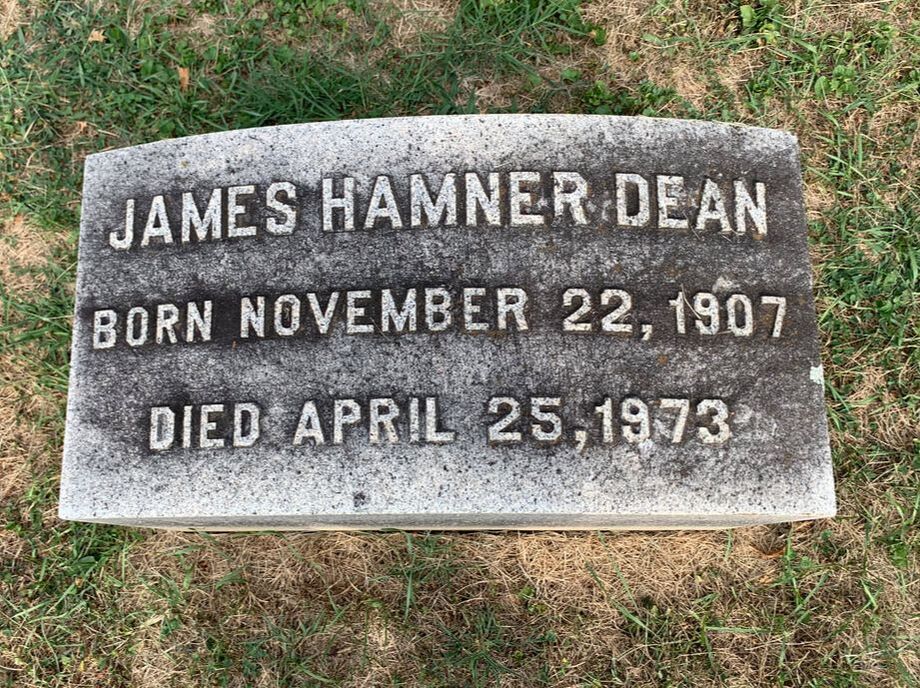
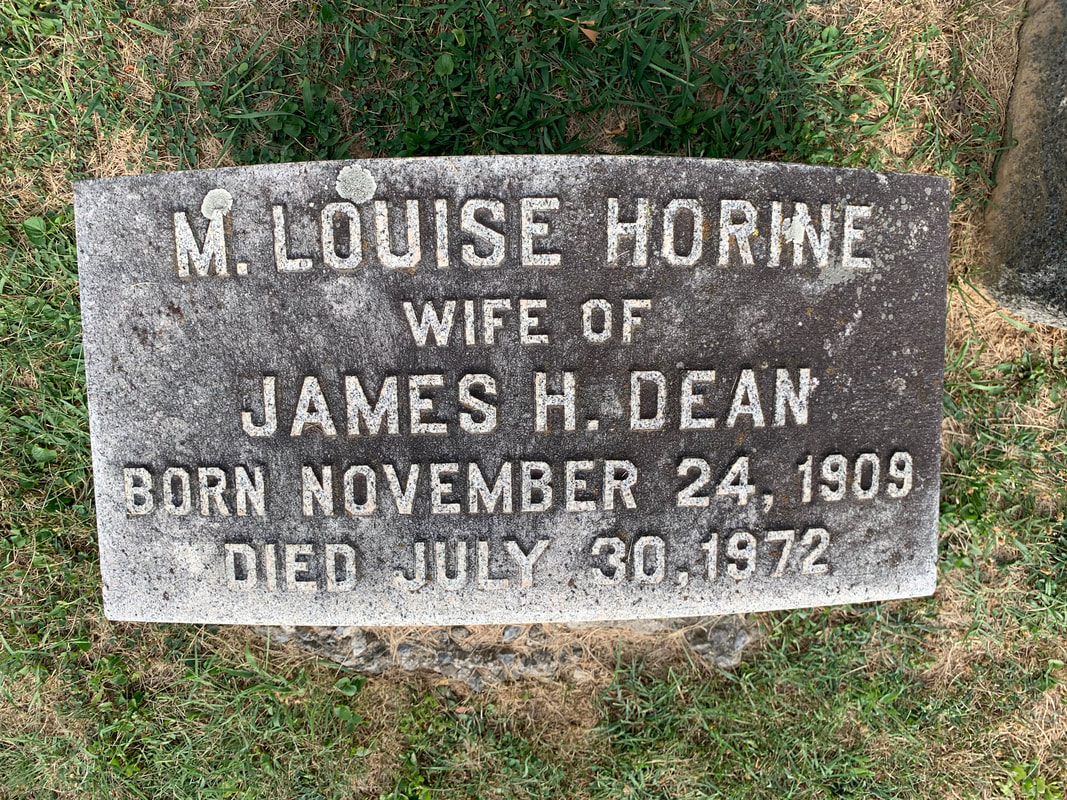
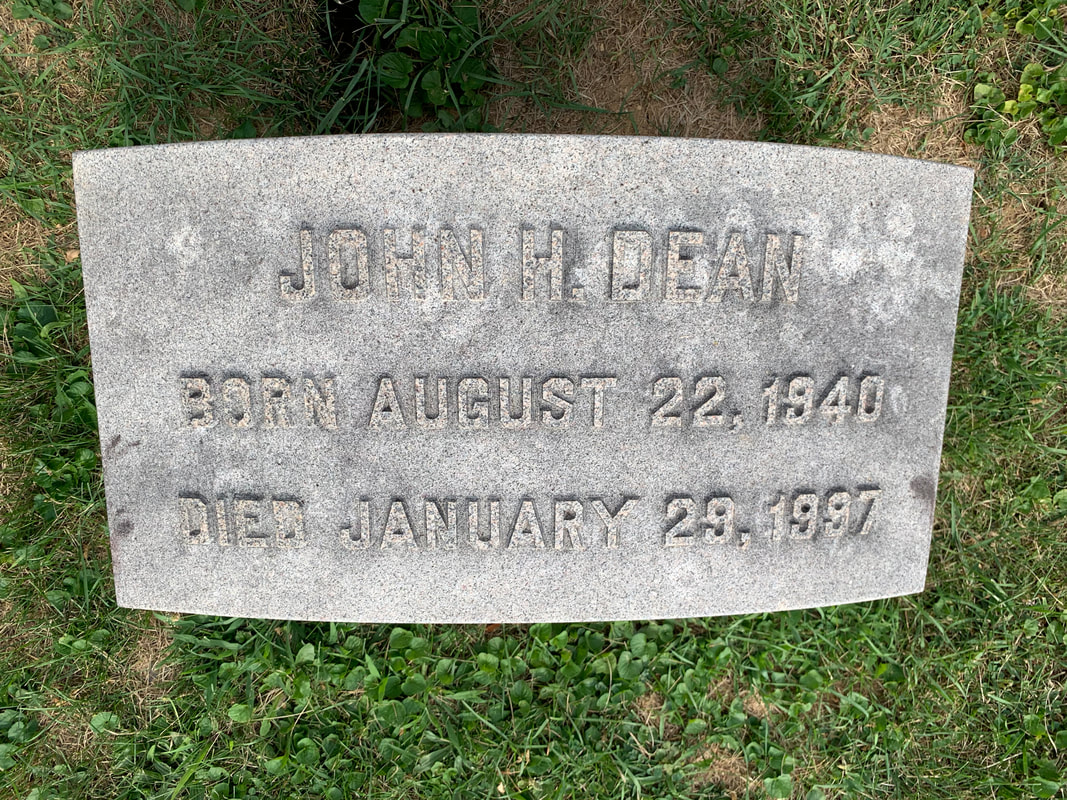



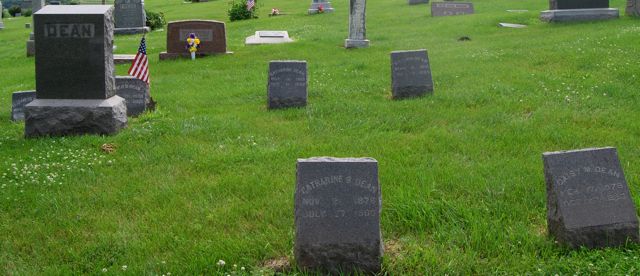

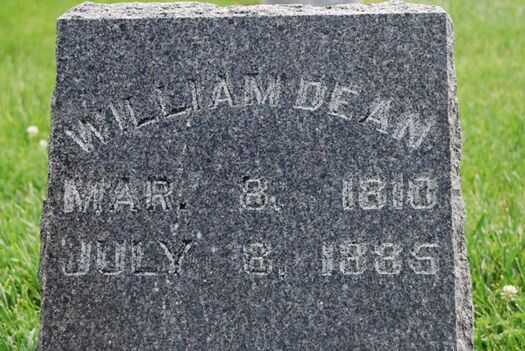
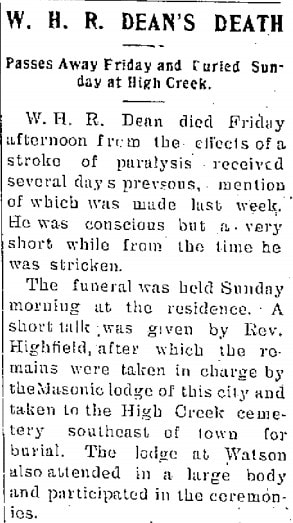
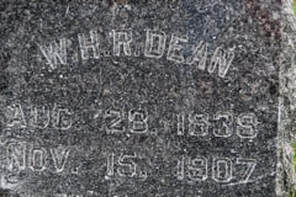
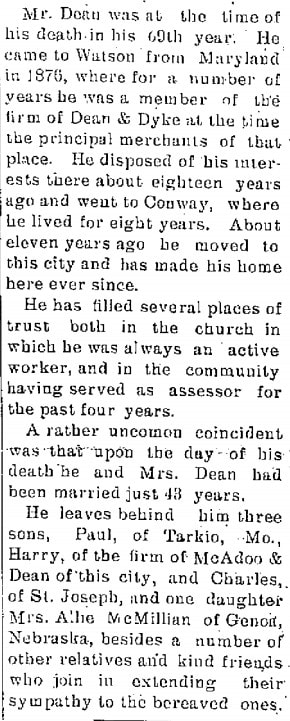

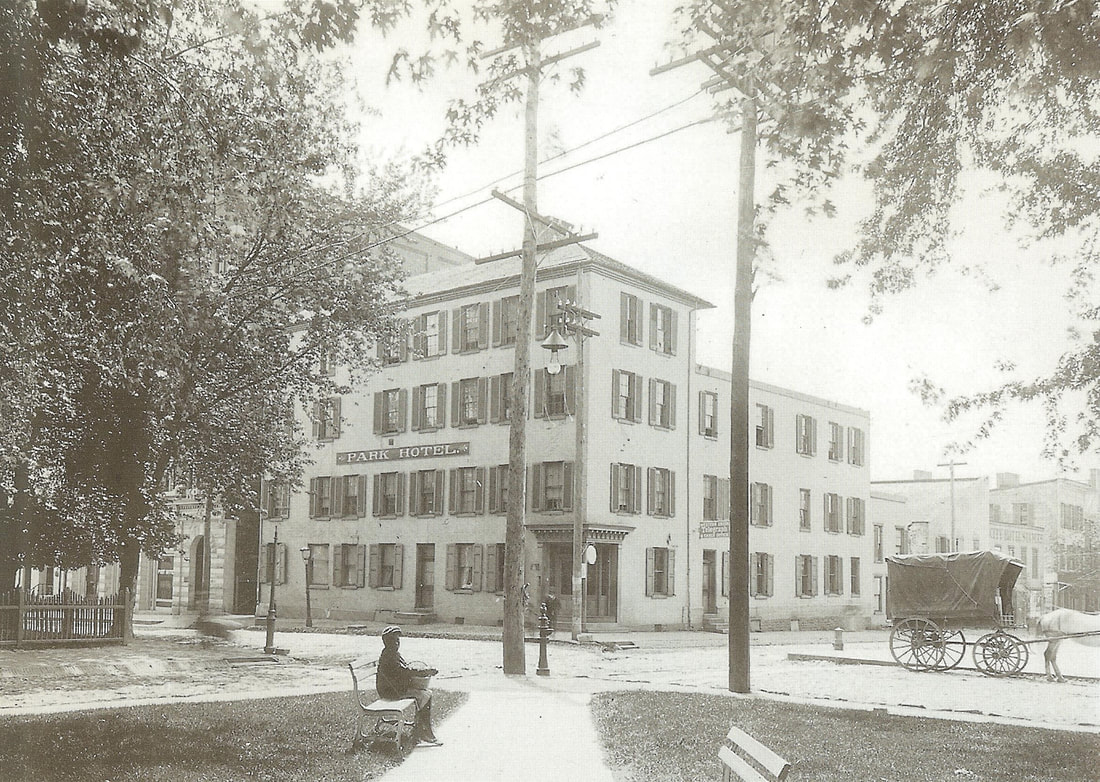
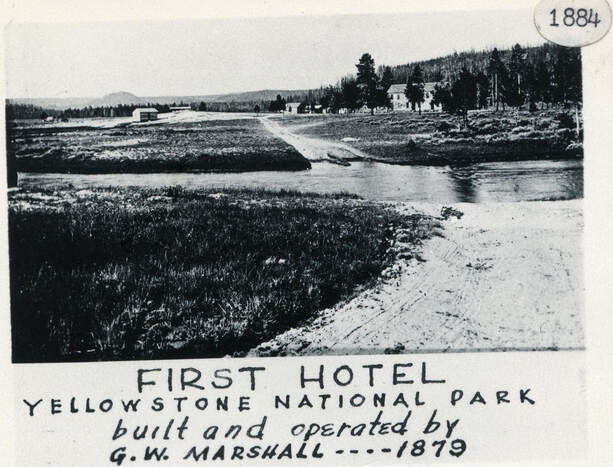
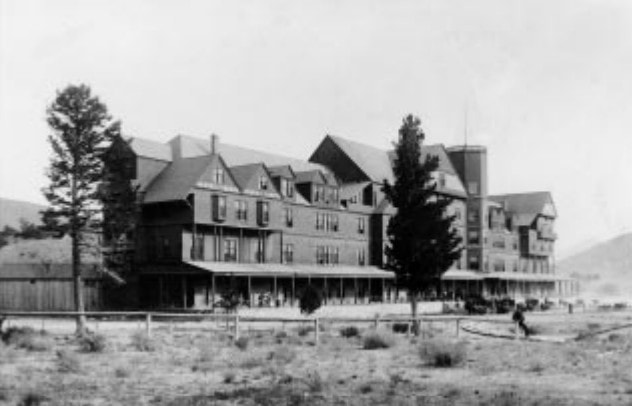
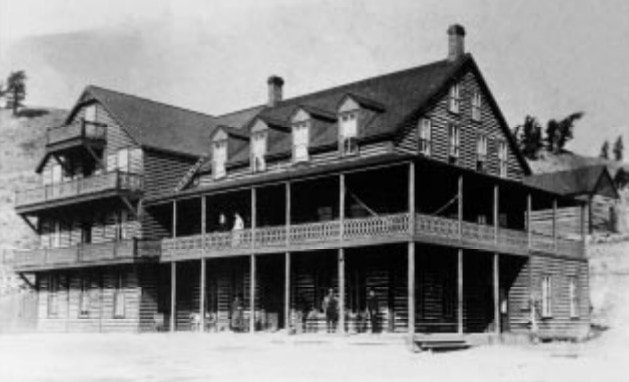

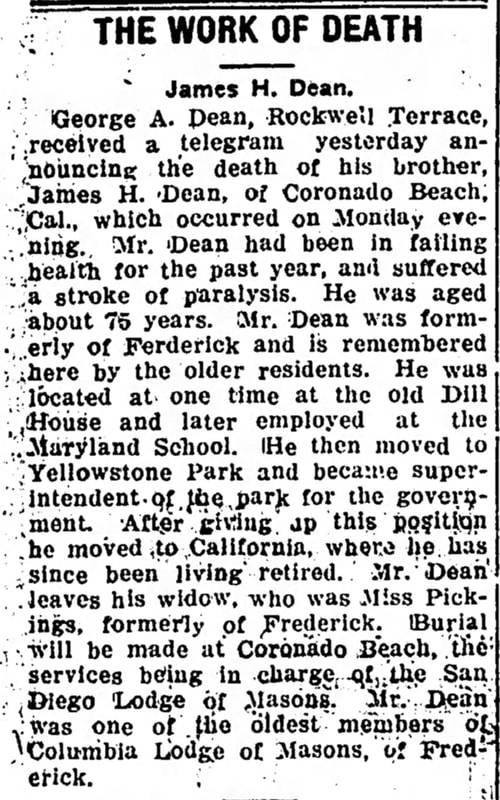
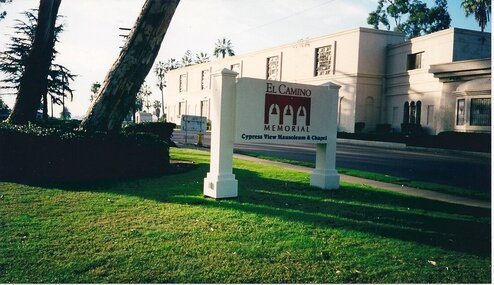

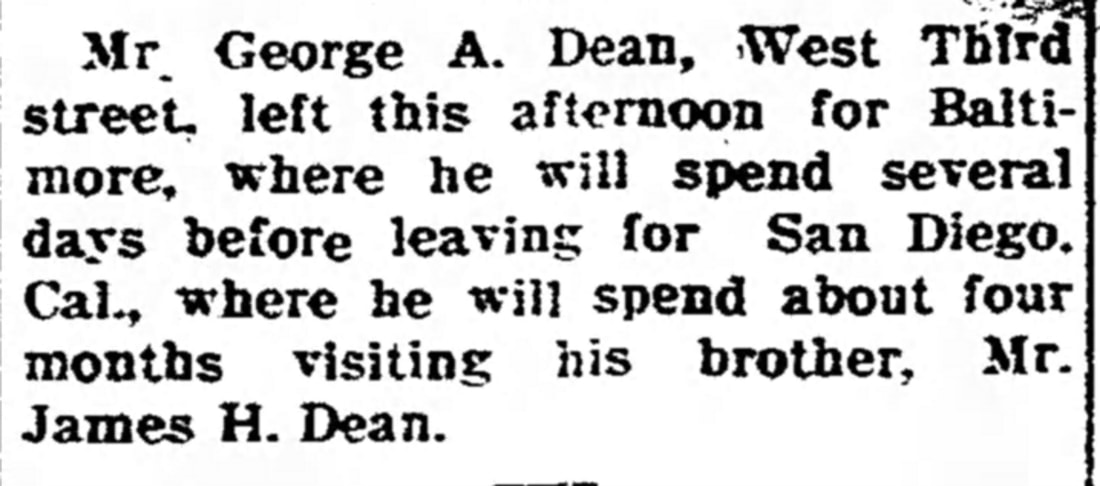
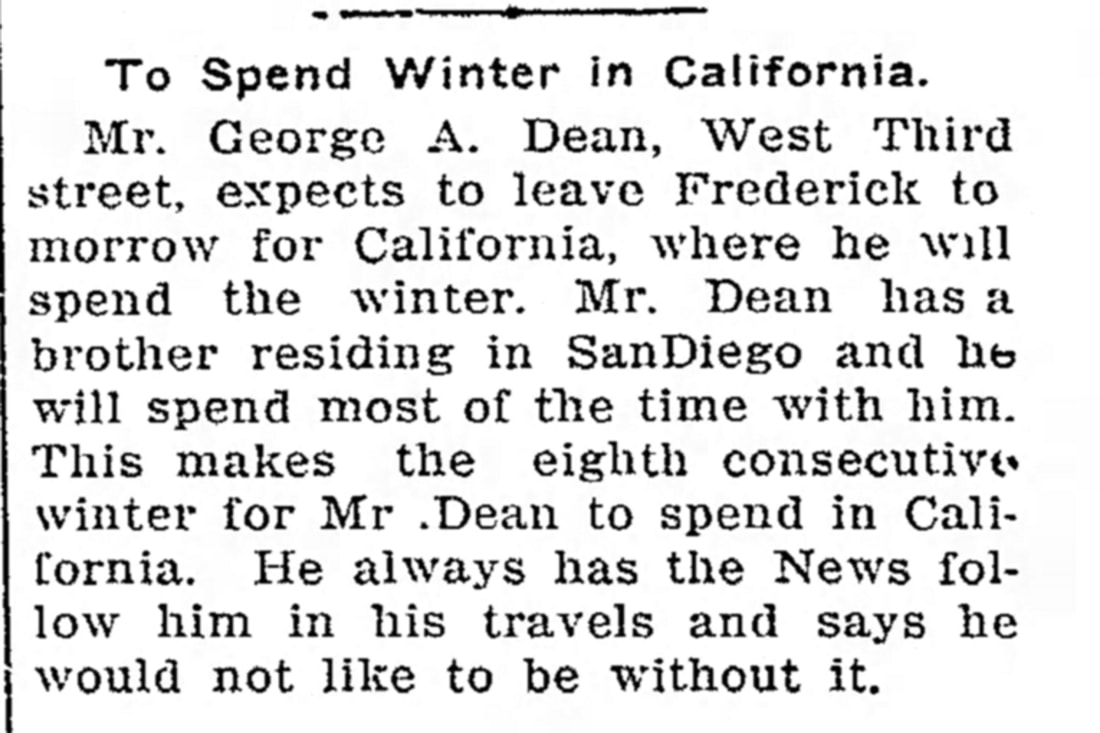
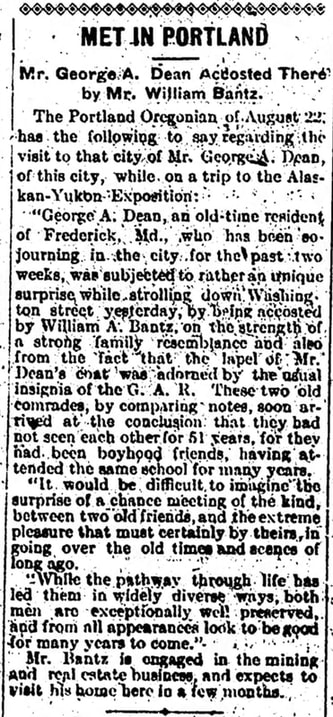
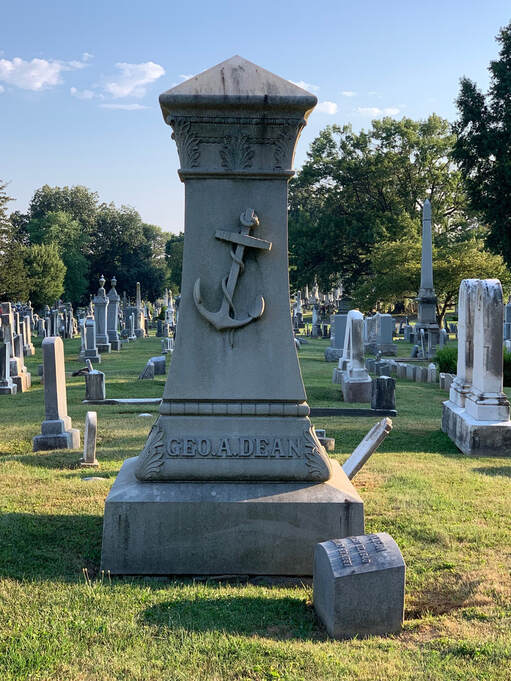
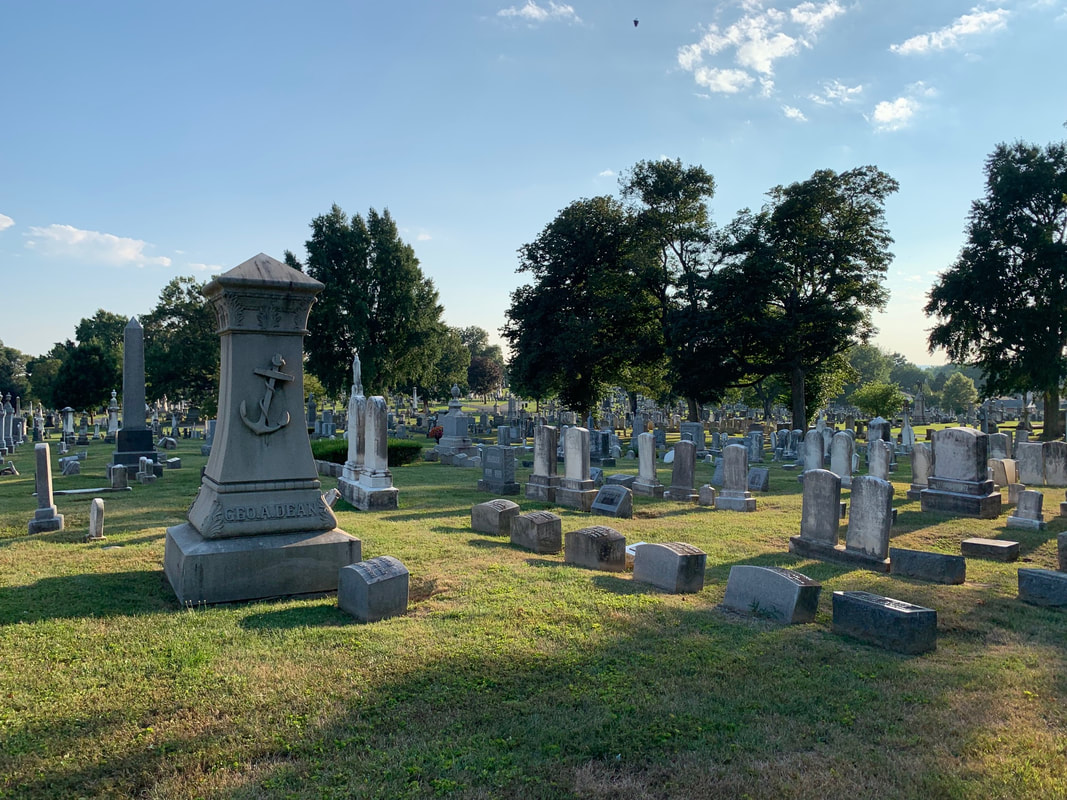
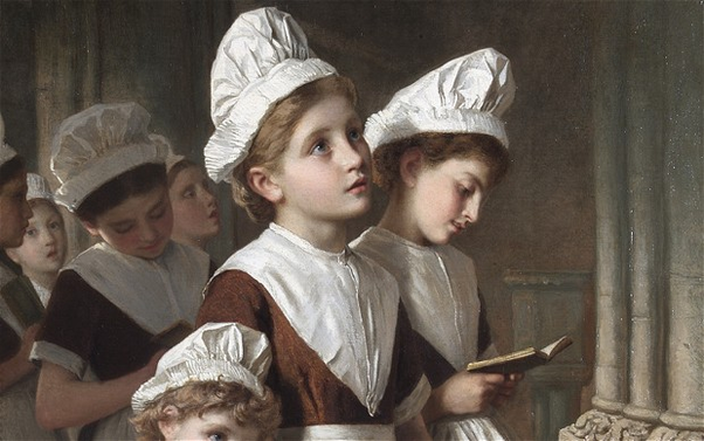
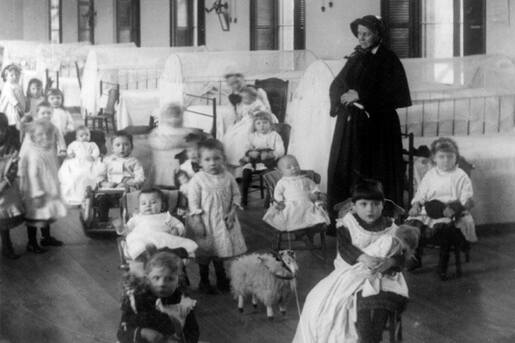
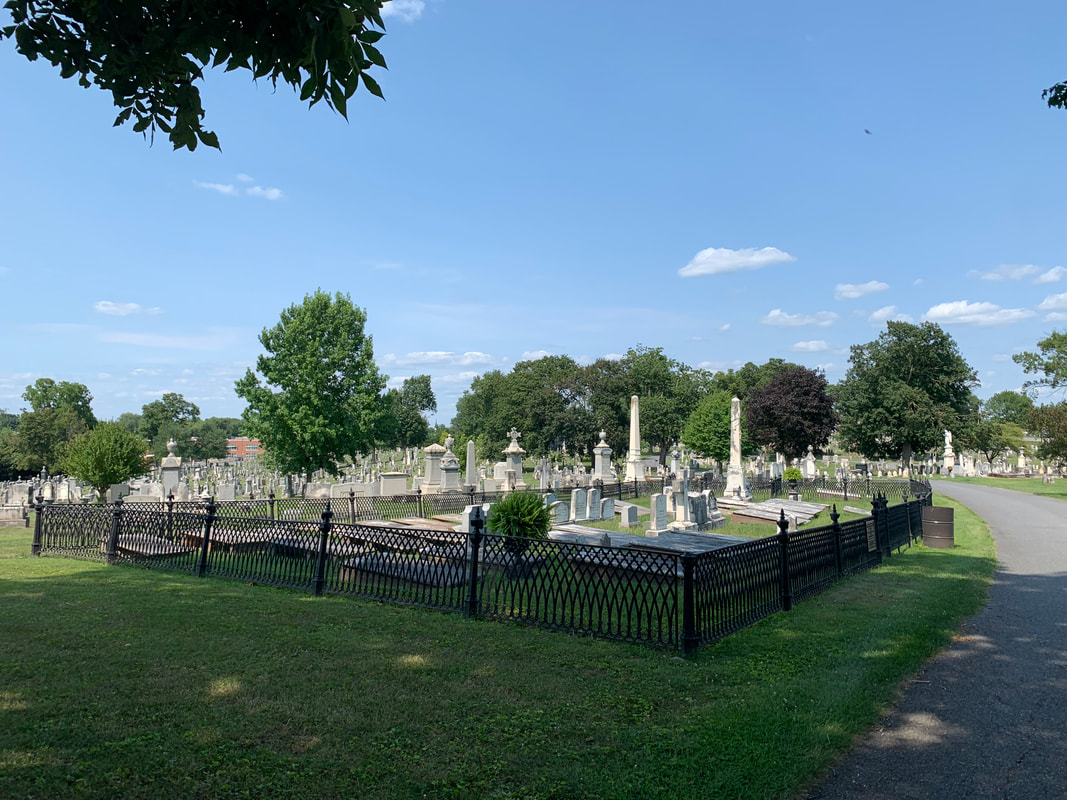
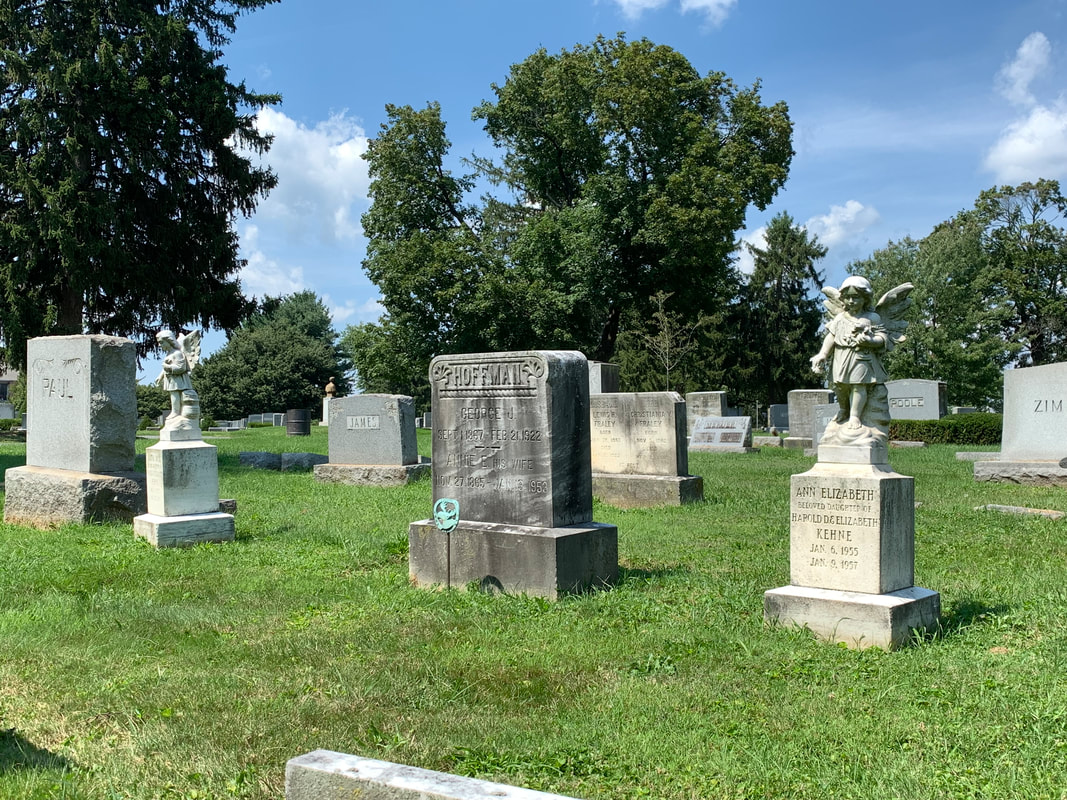
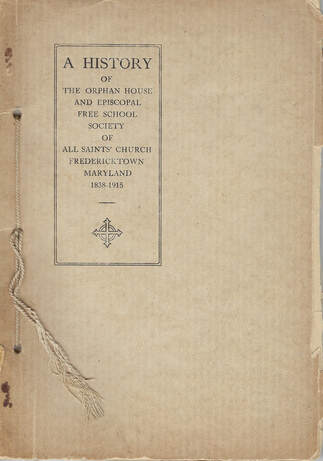
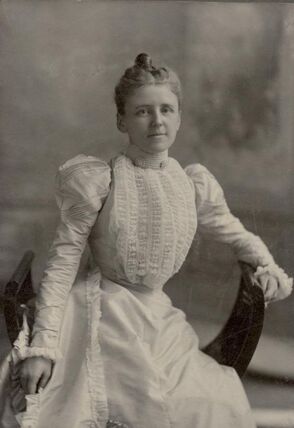
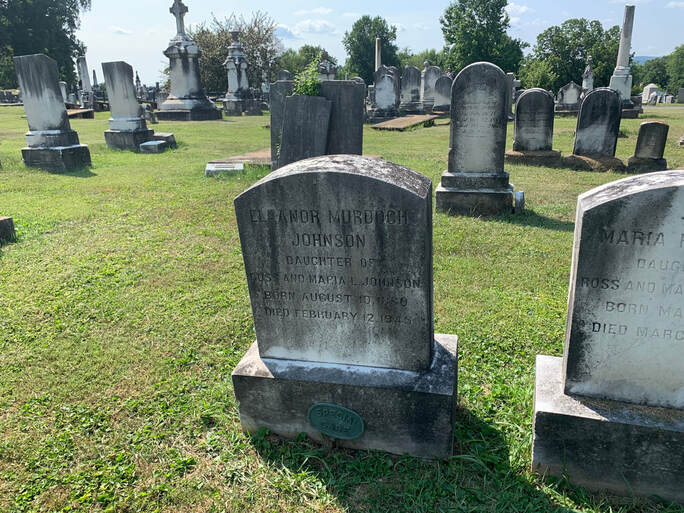
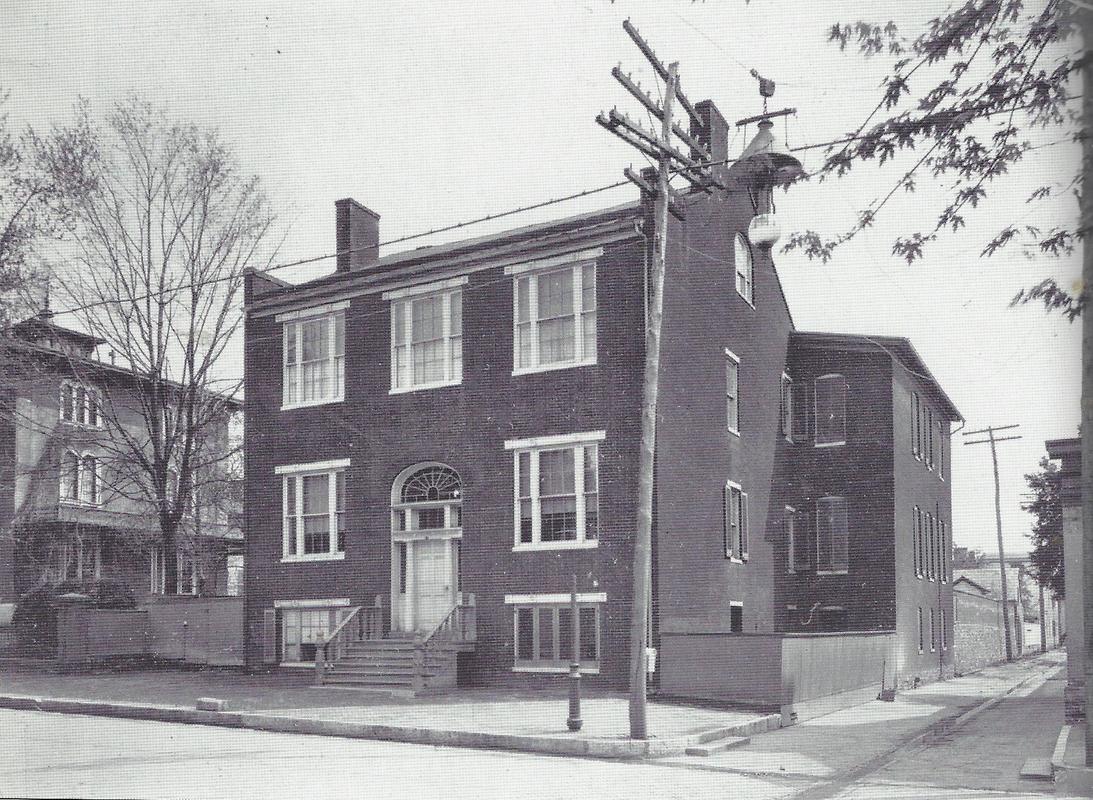
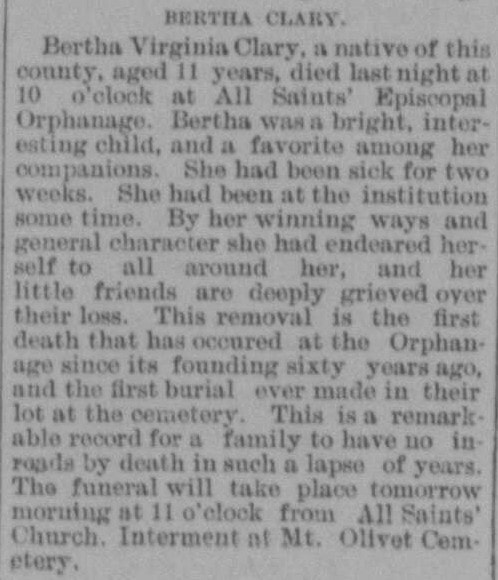
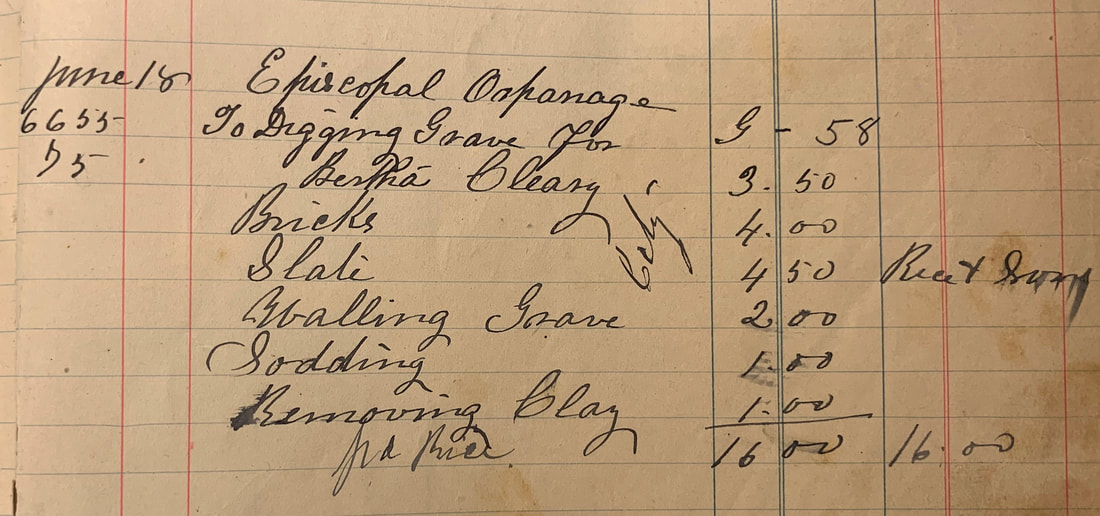
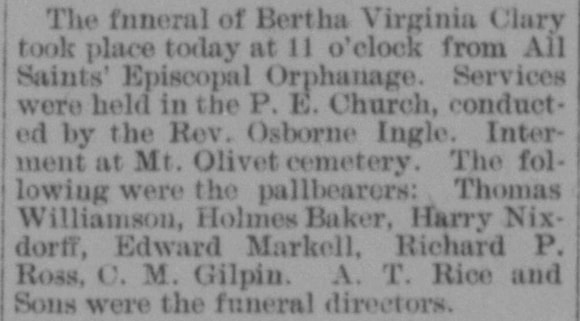
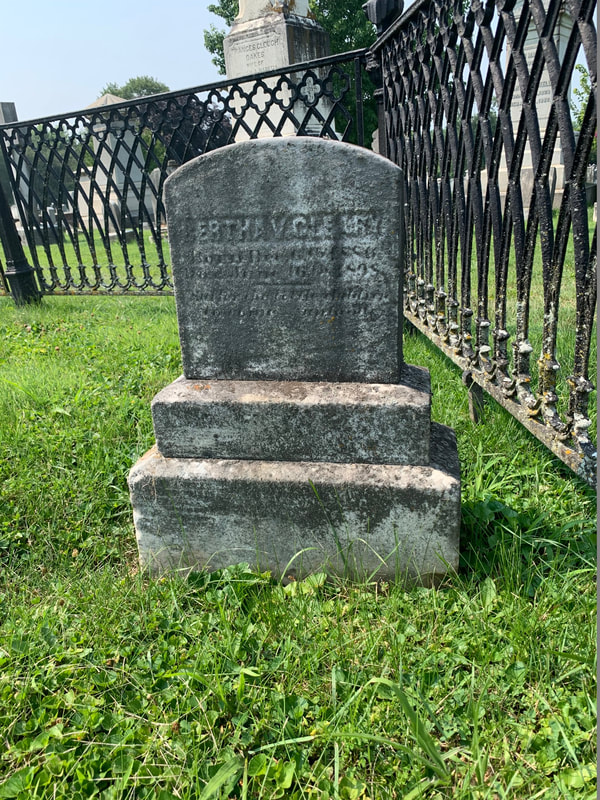




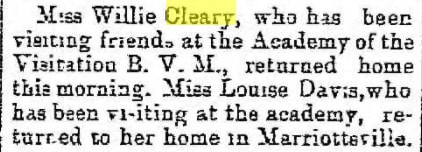

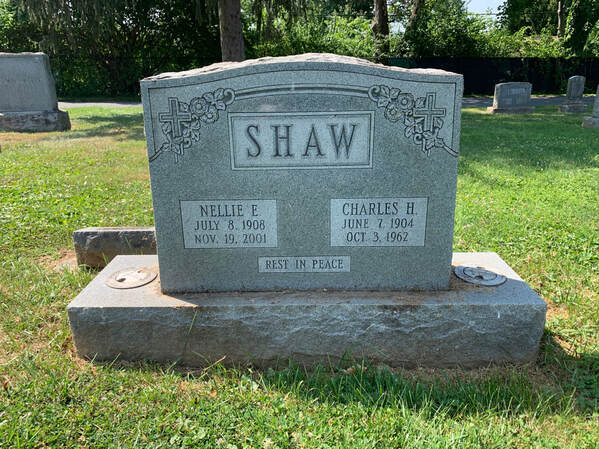

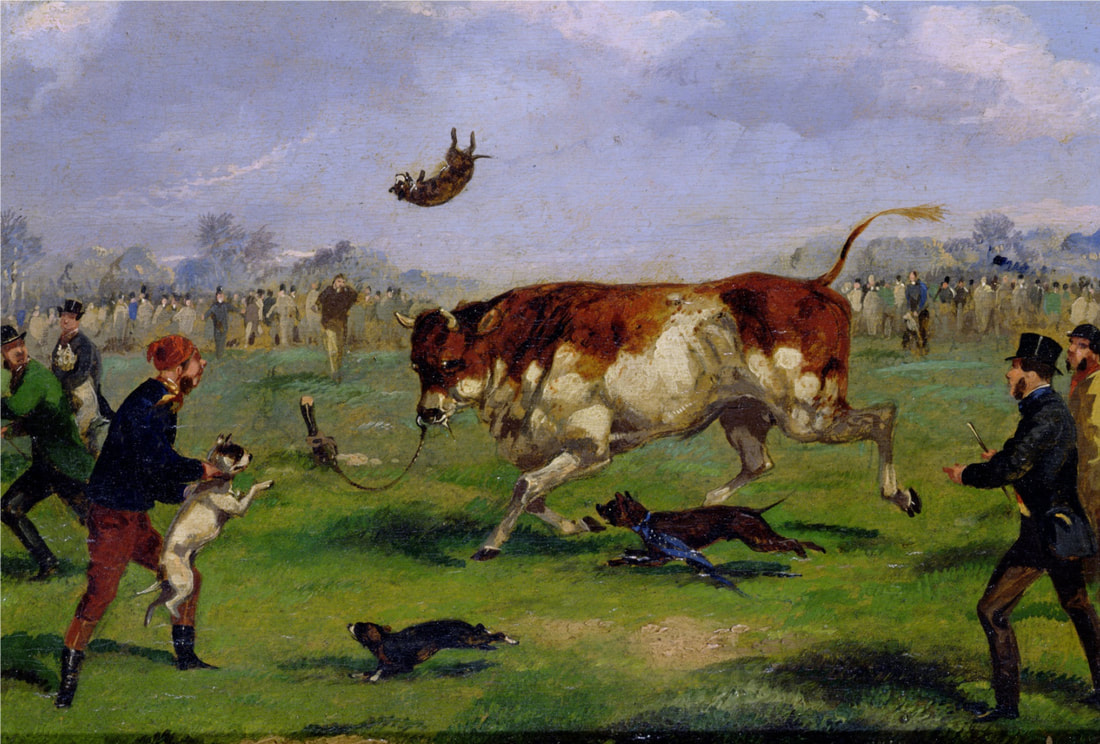


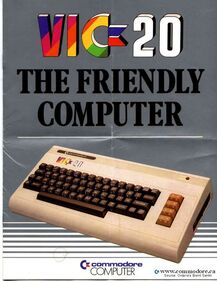
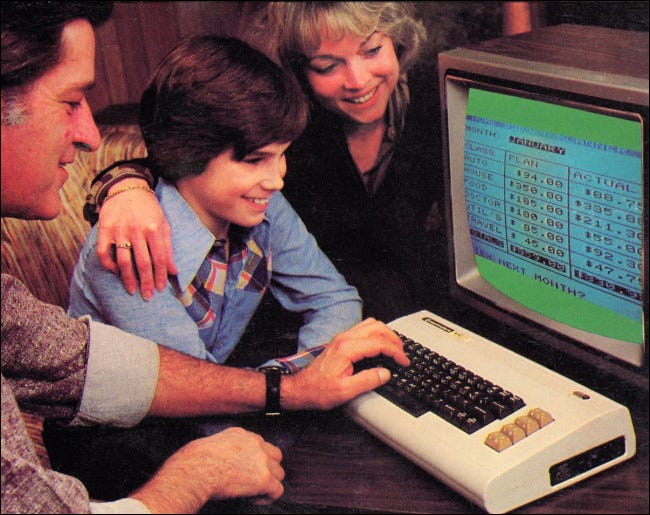




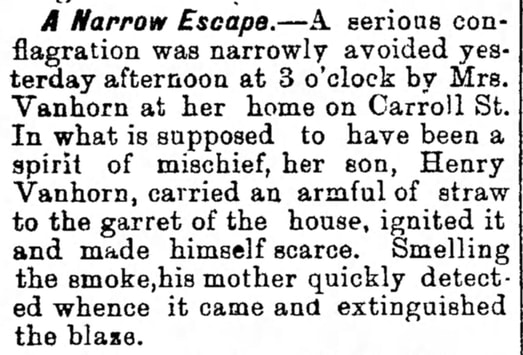

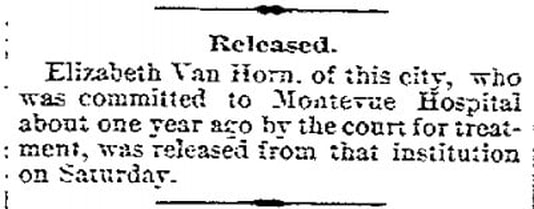
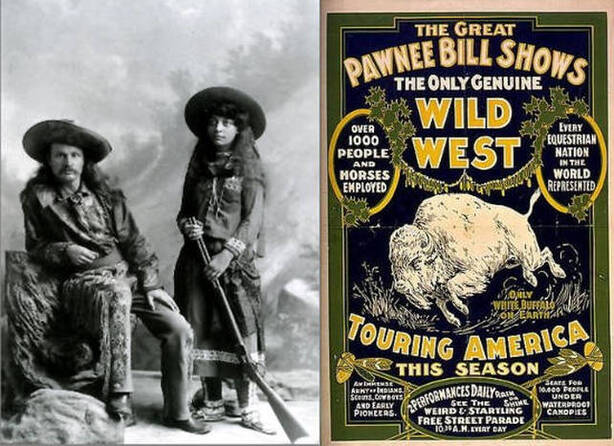
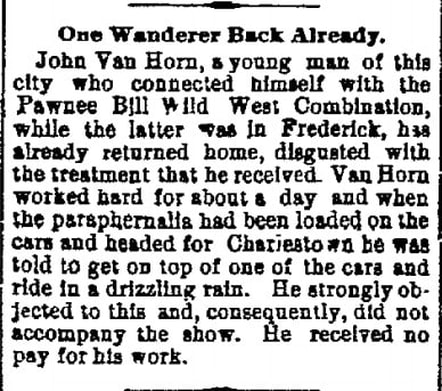
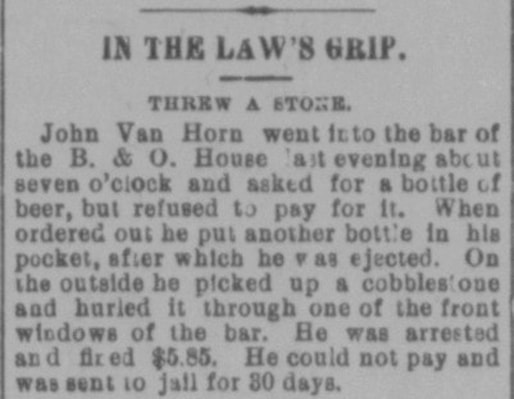
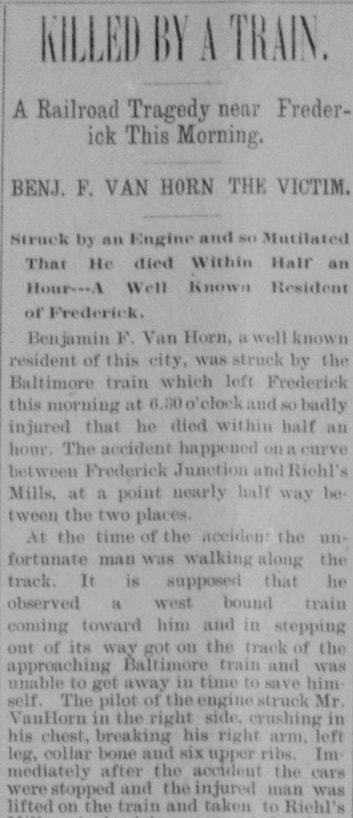
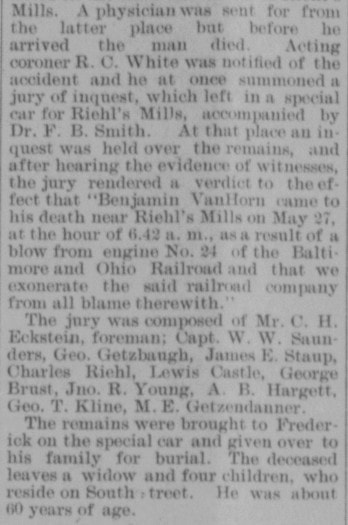
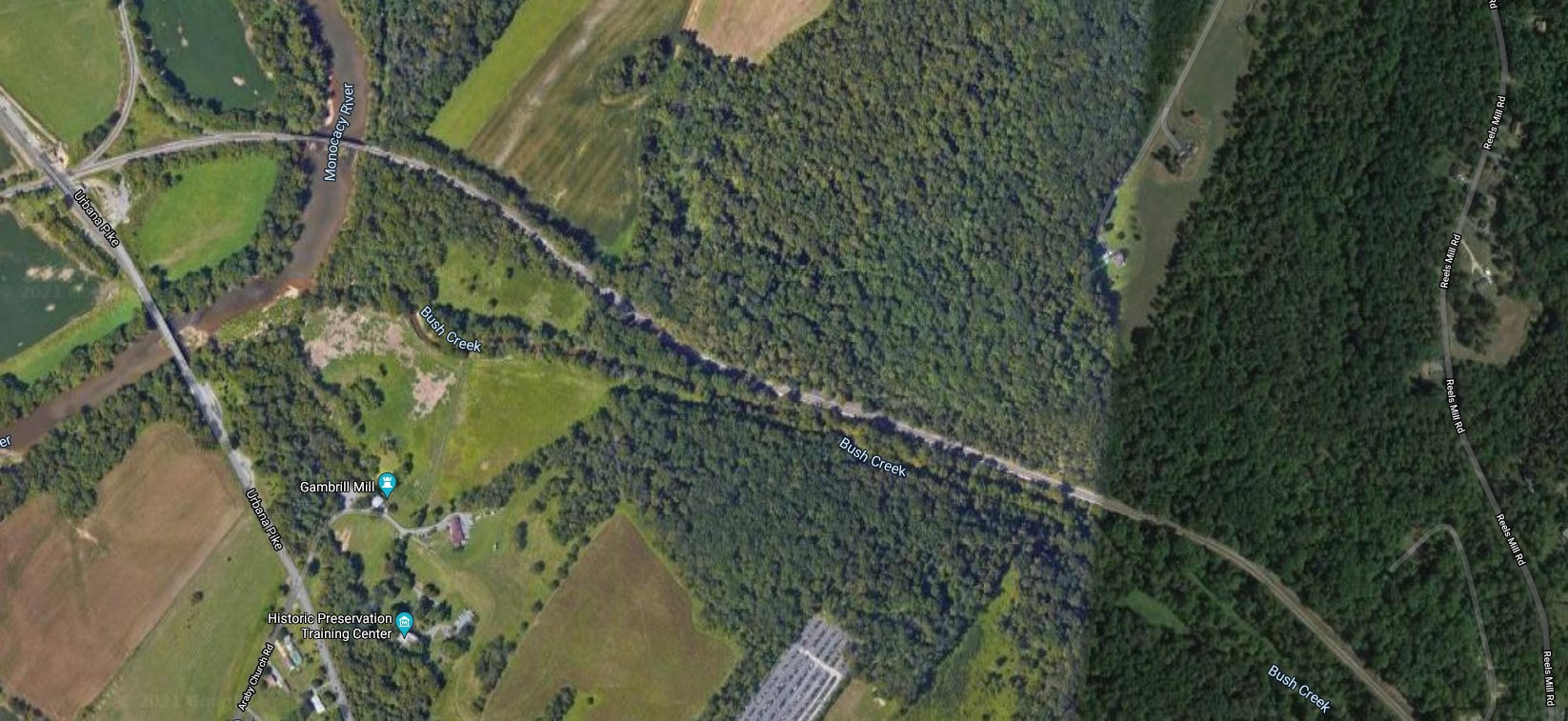
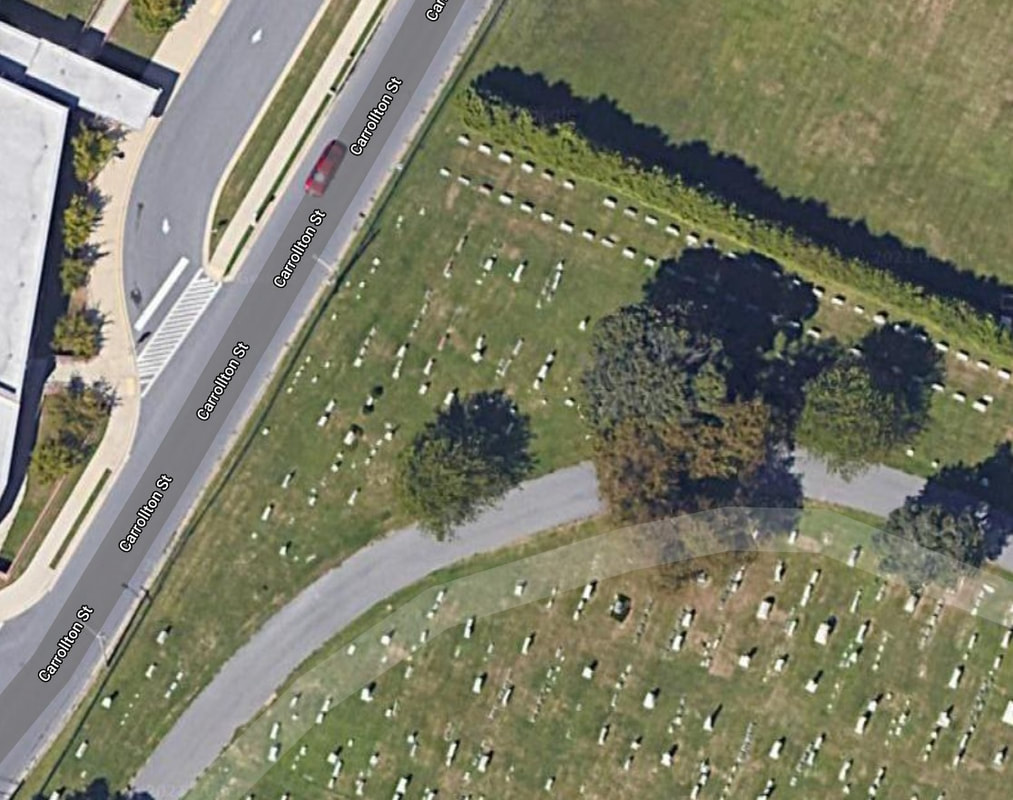
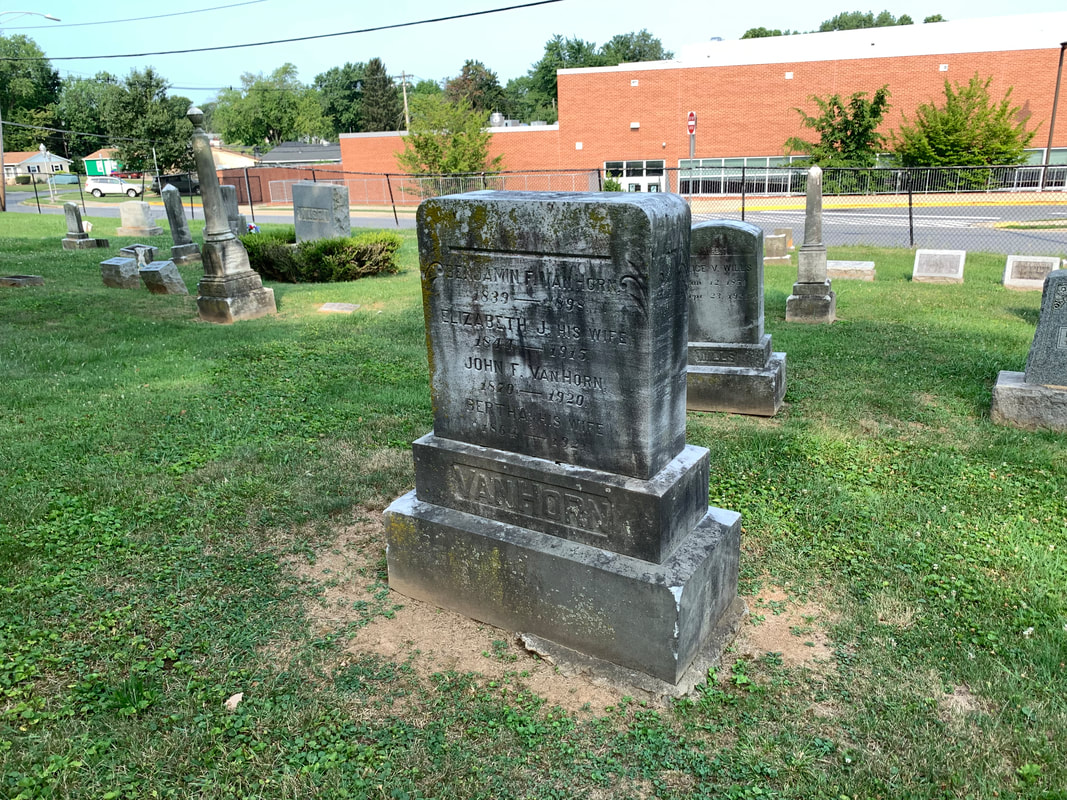
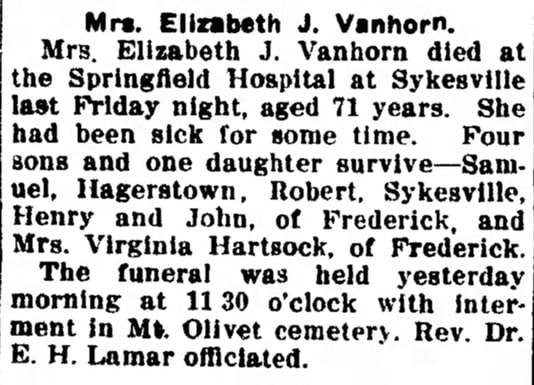


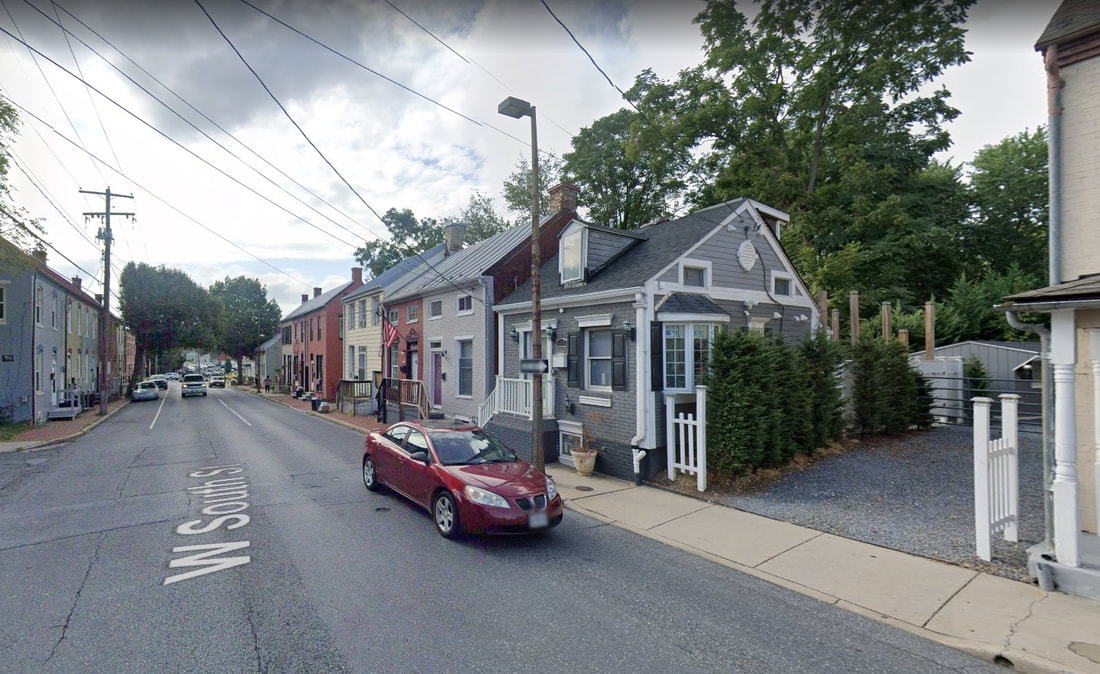

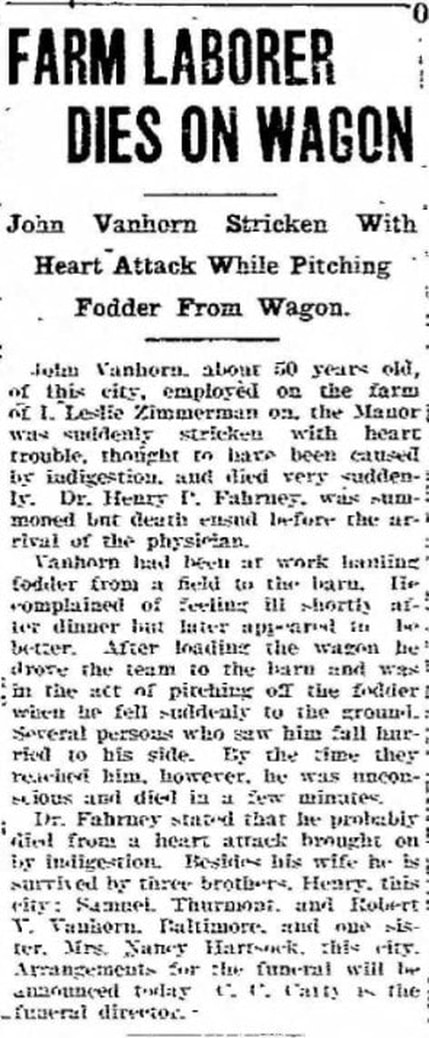
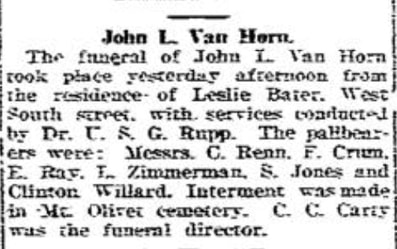
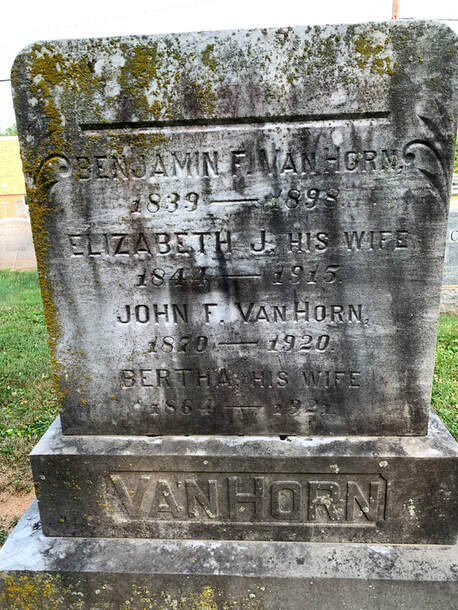
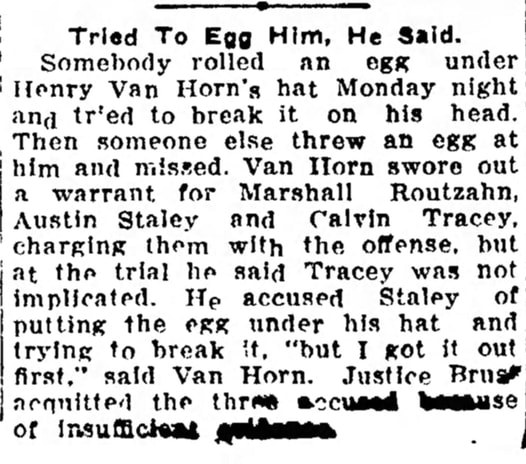
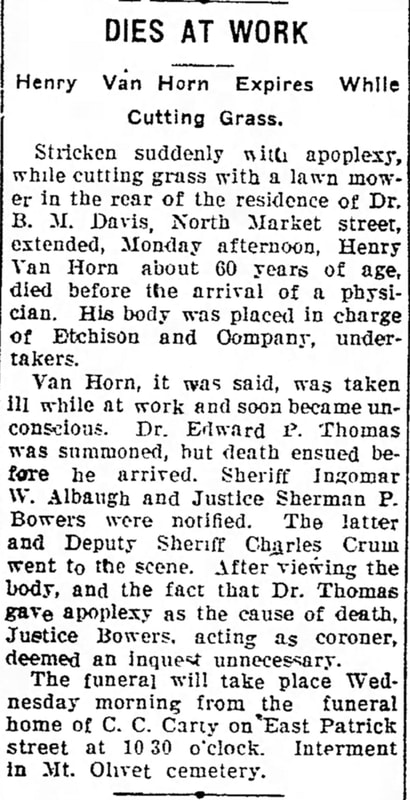
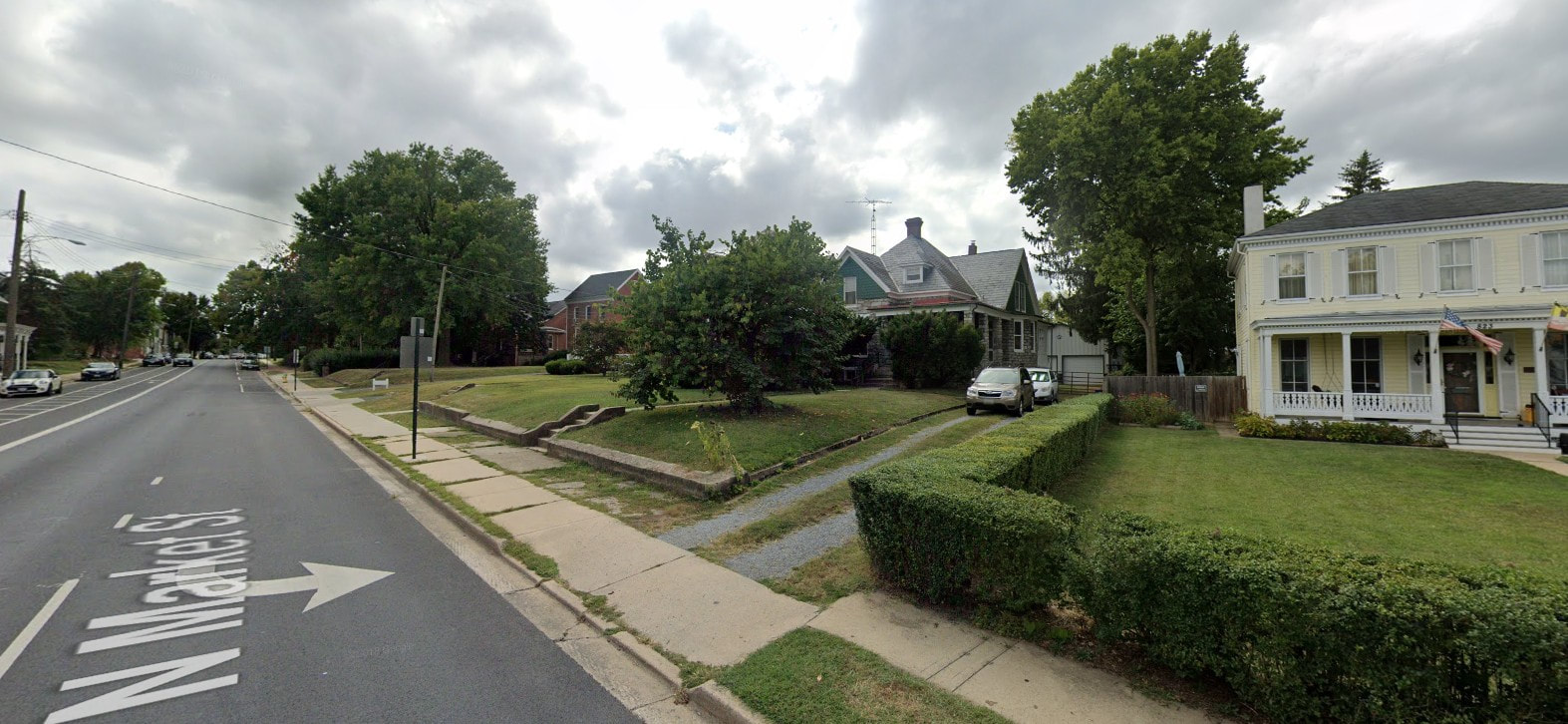
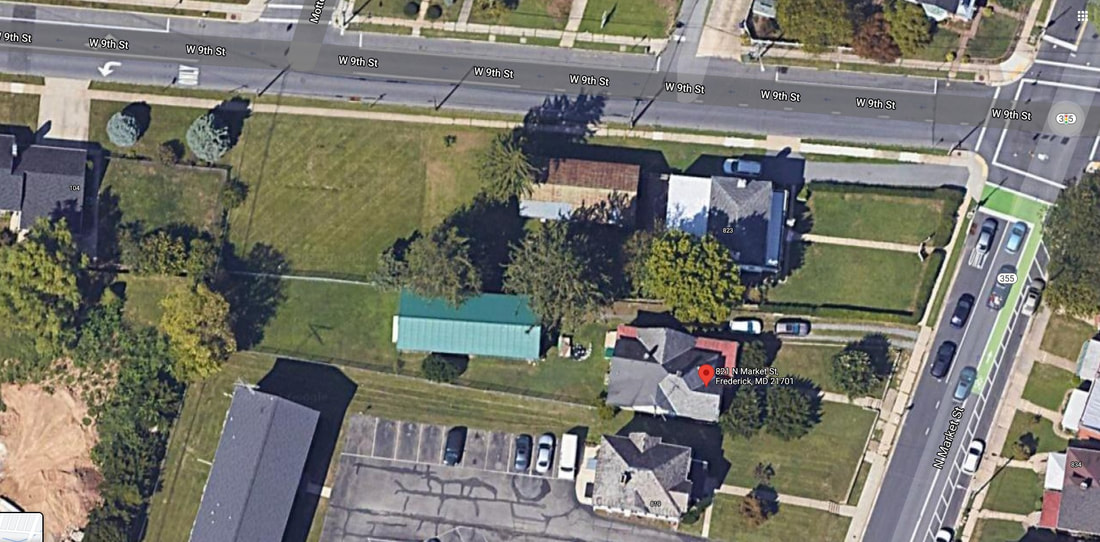
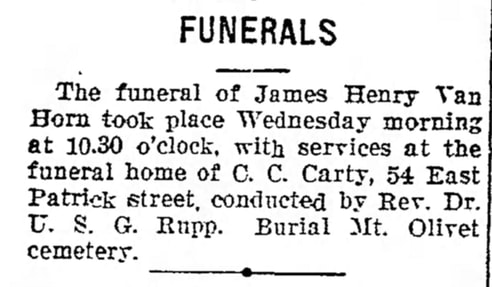

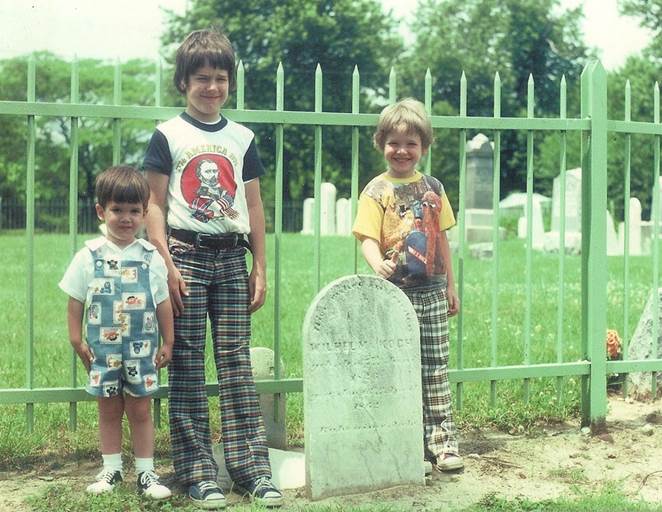
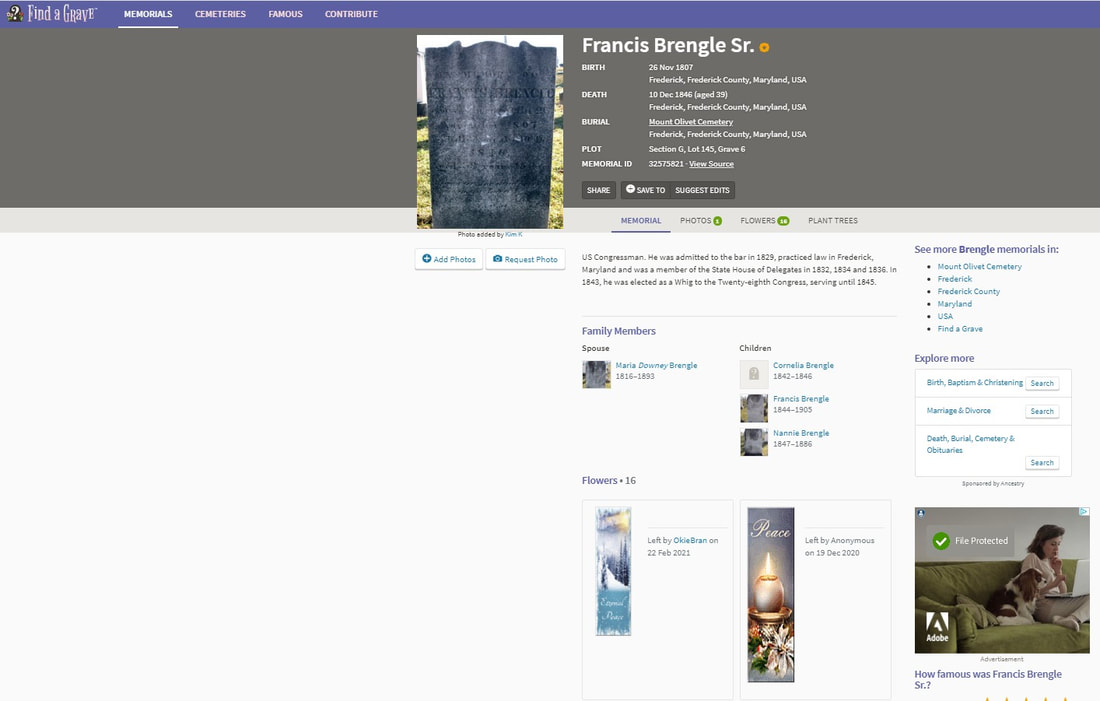


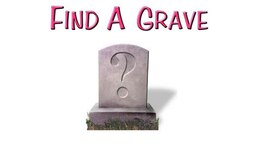
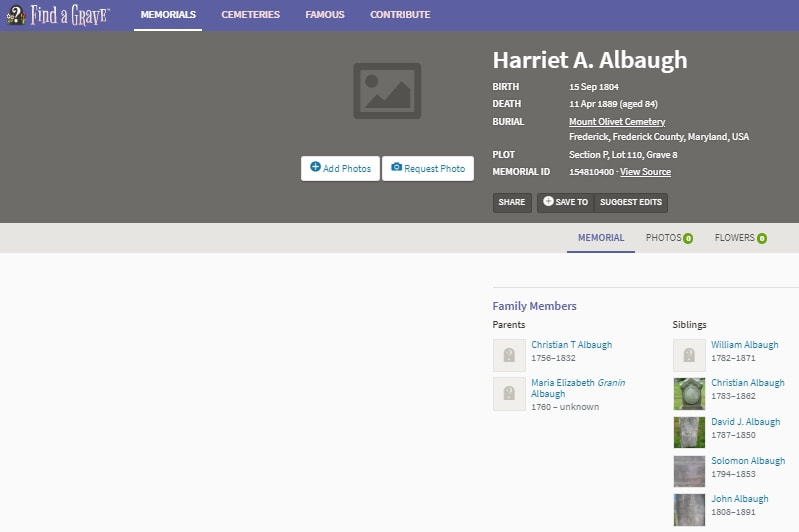
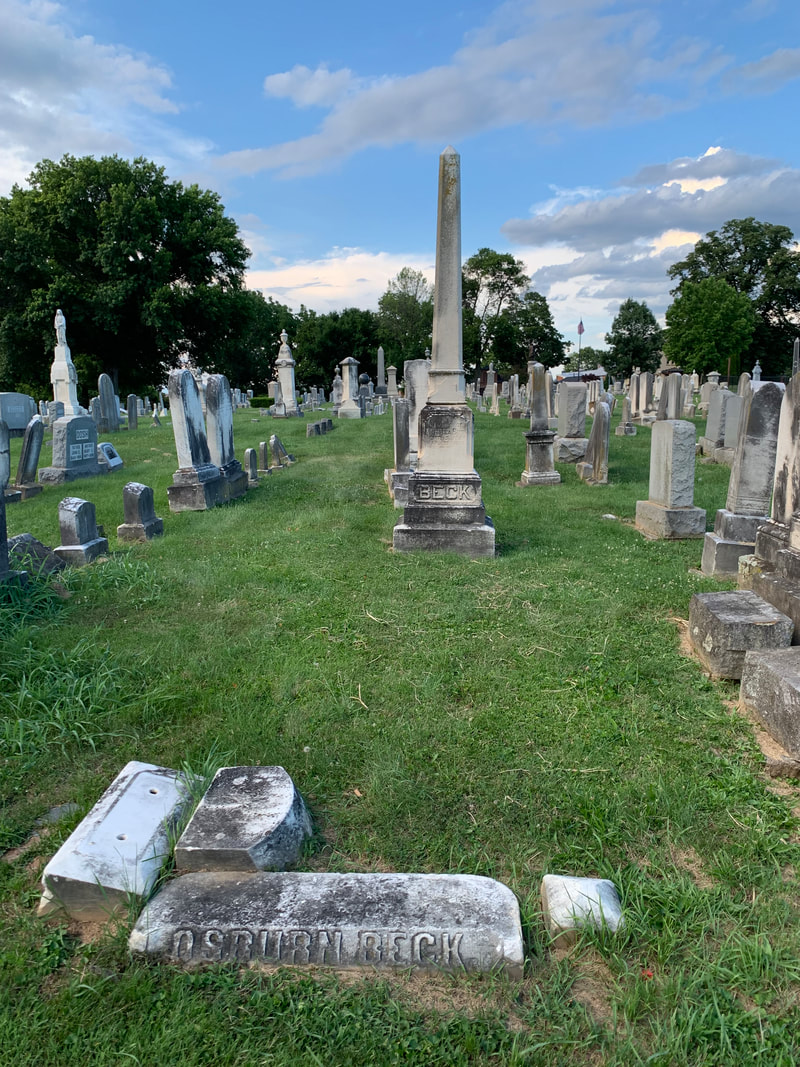


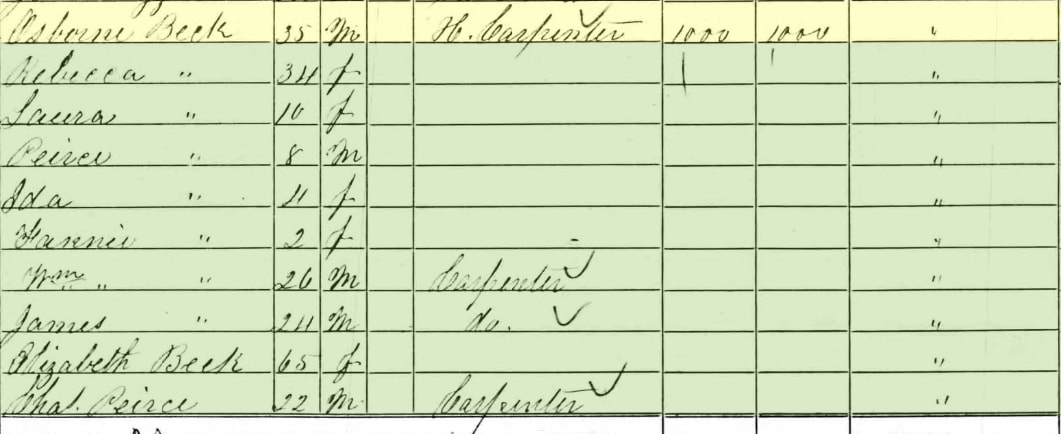
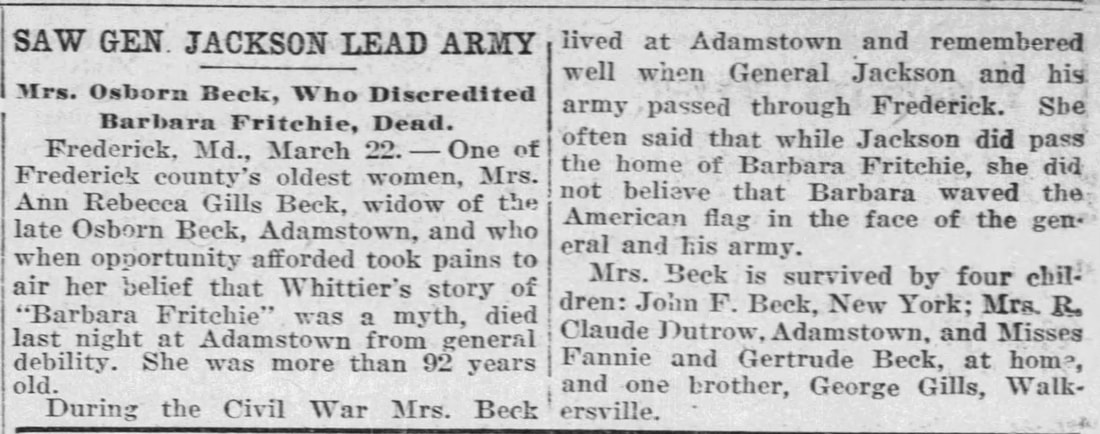
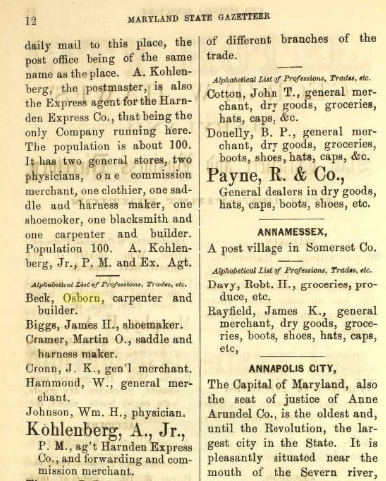


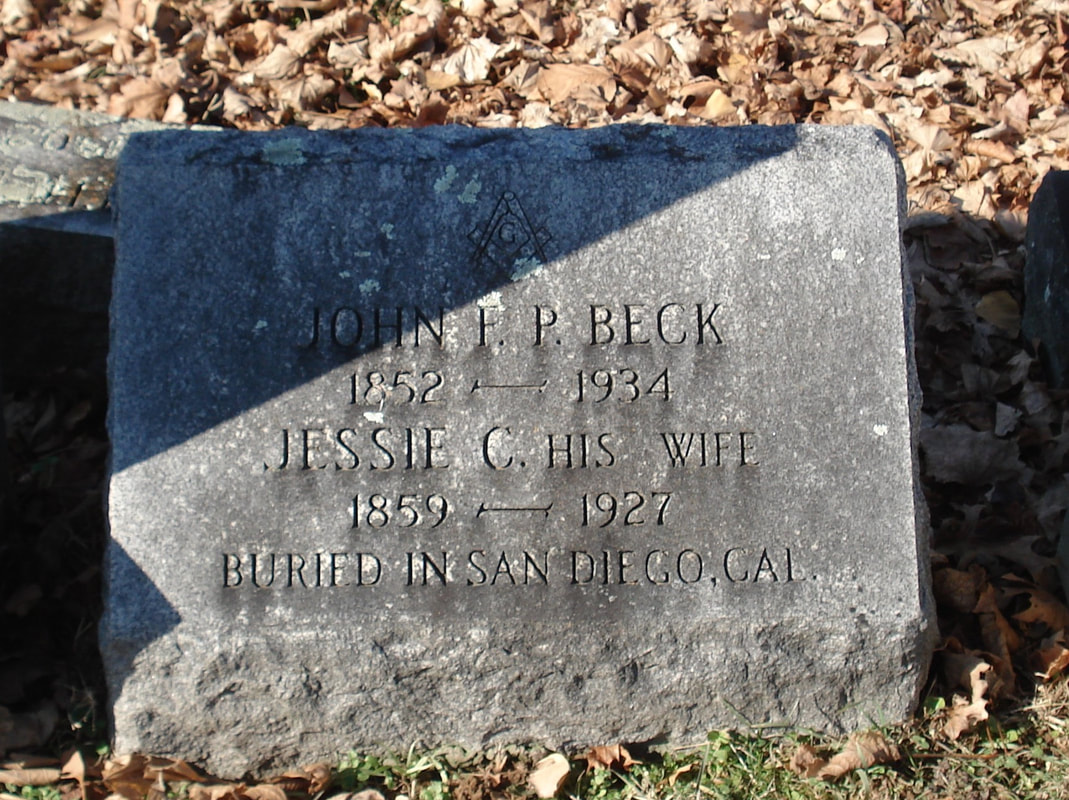
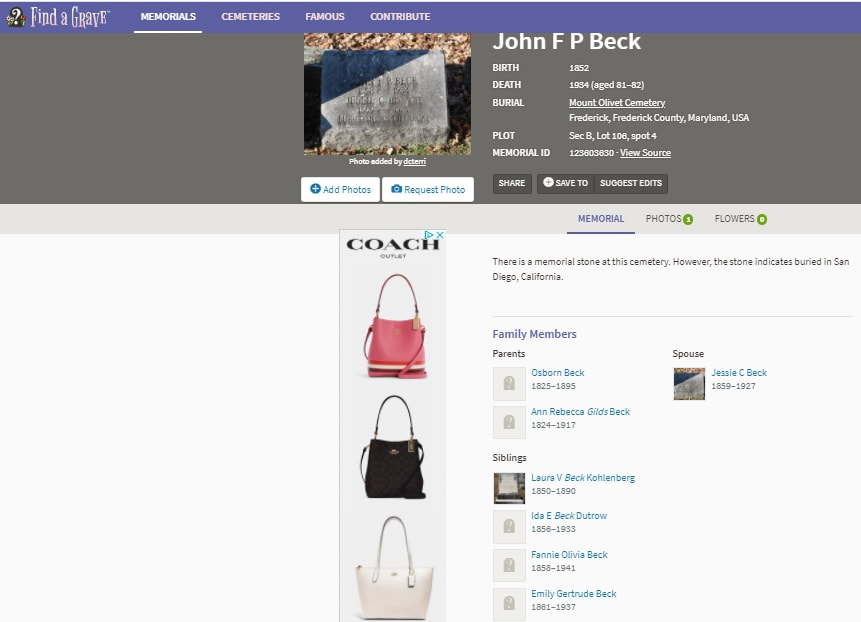
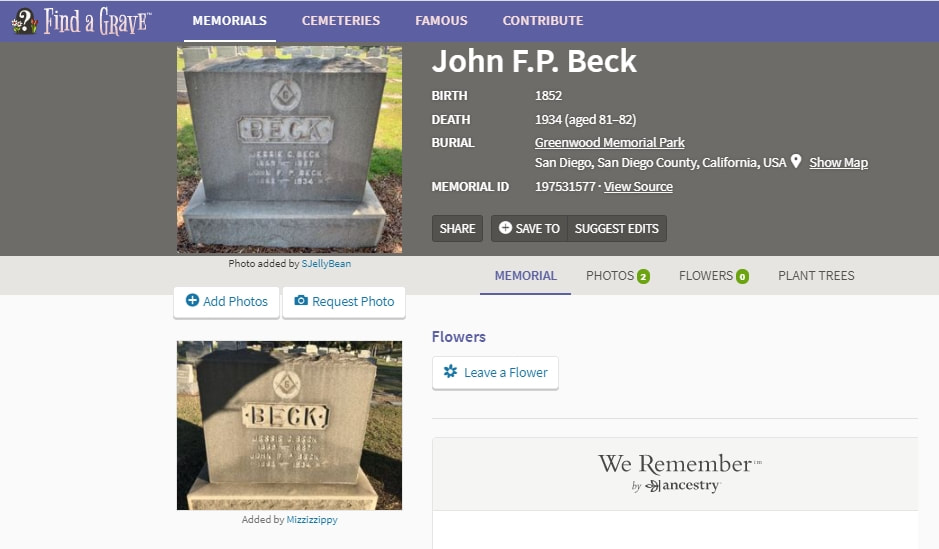
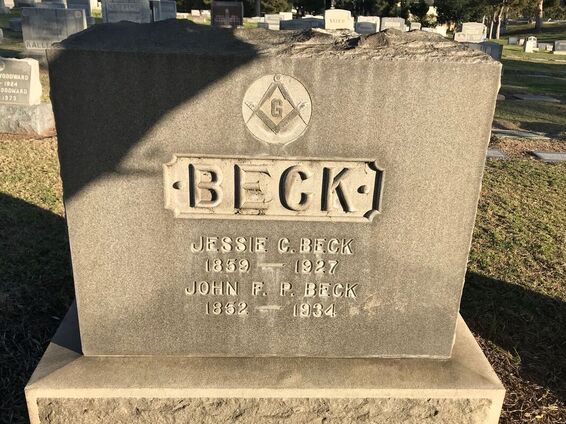
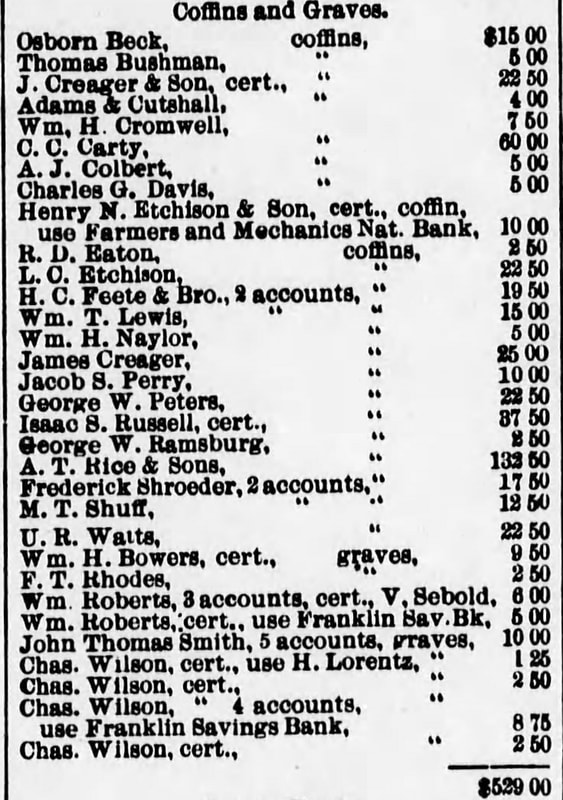
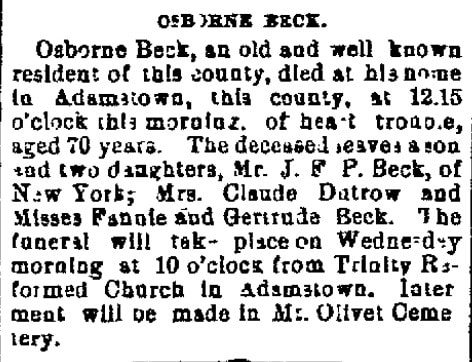
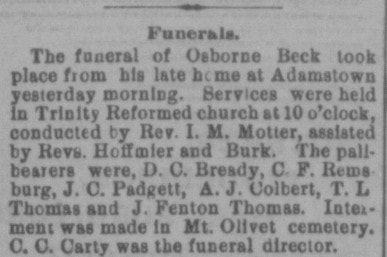
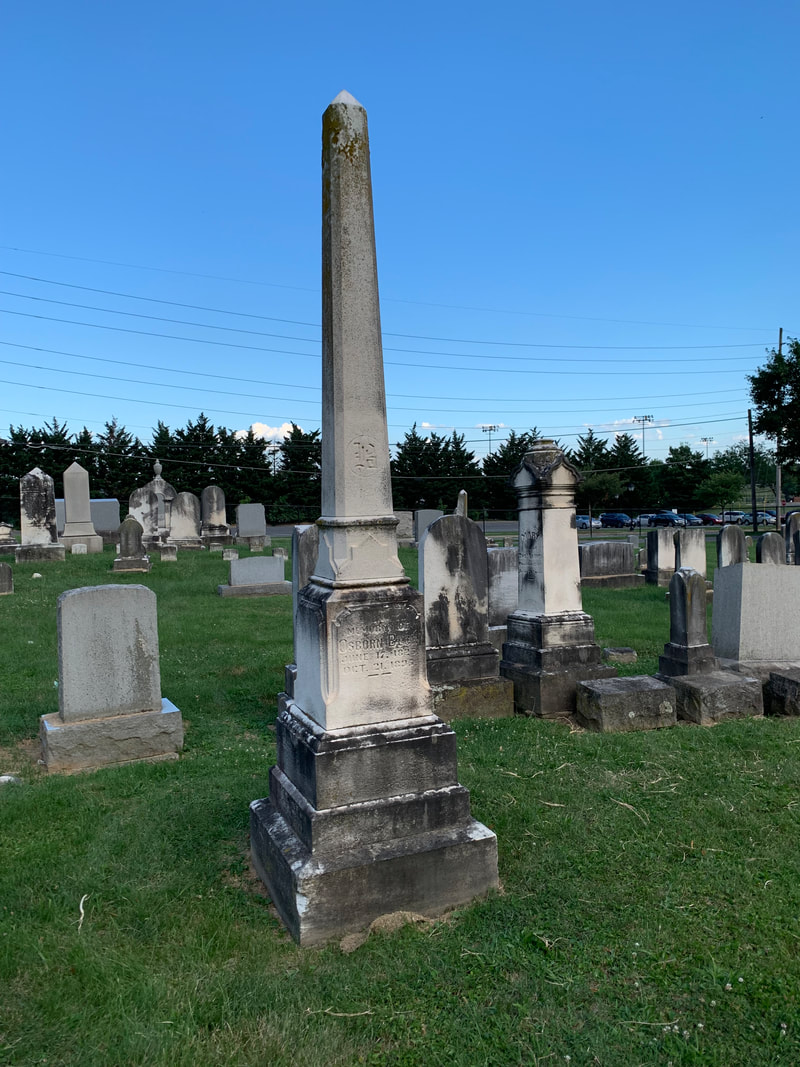
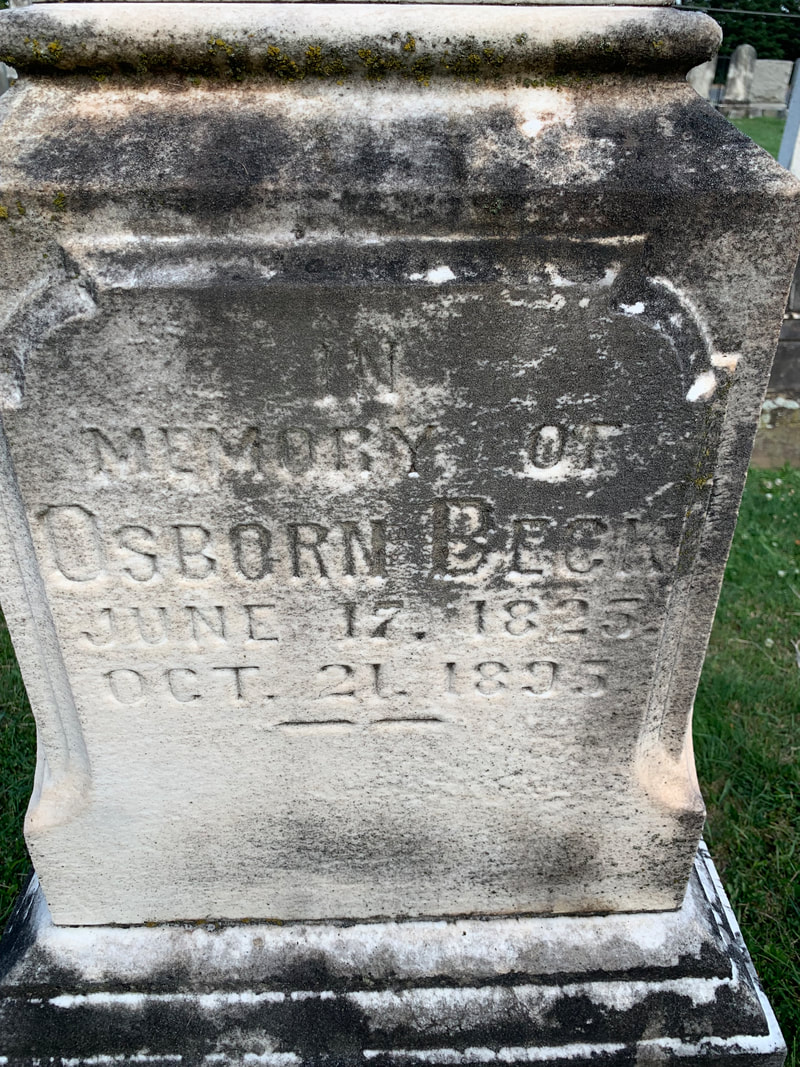
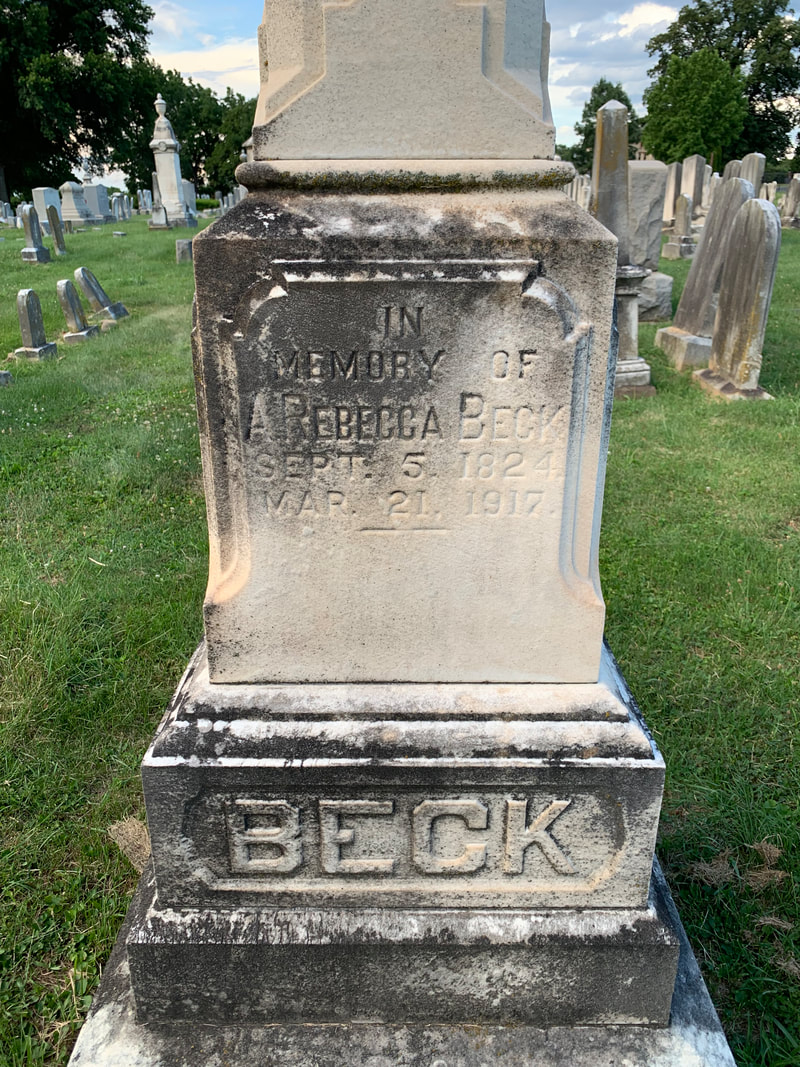
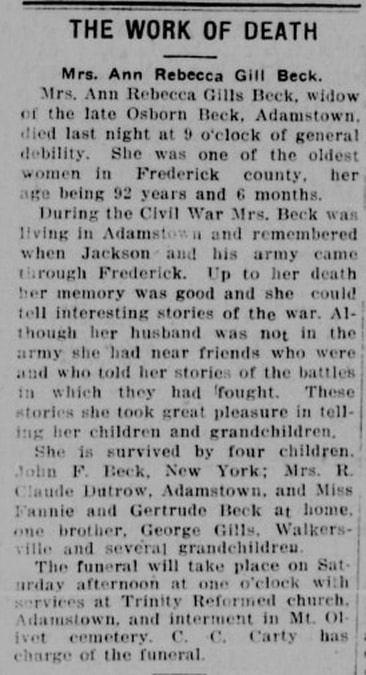
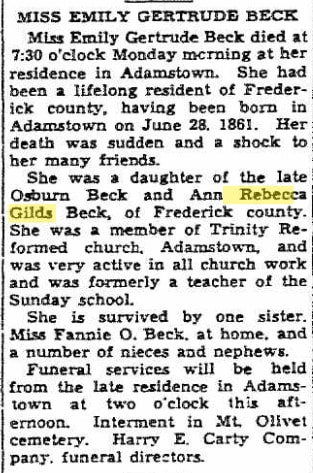
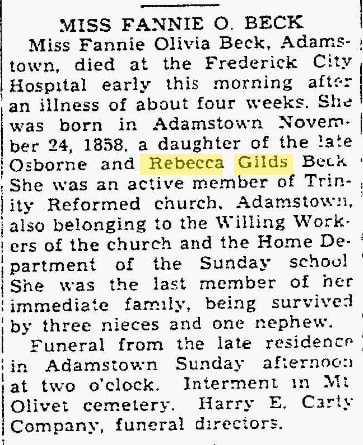
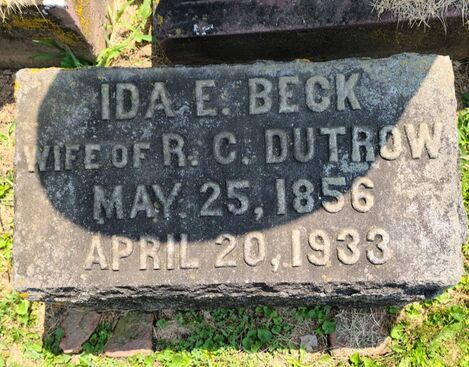



 RSS Feed
RSS Feed